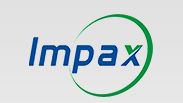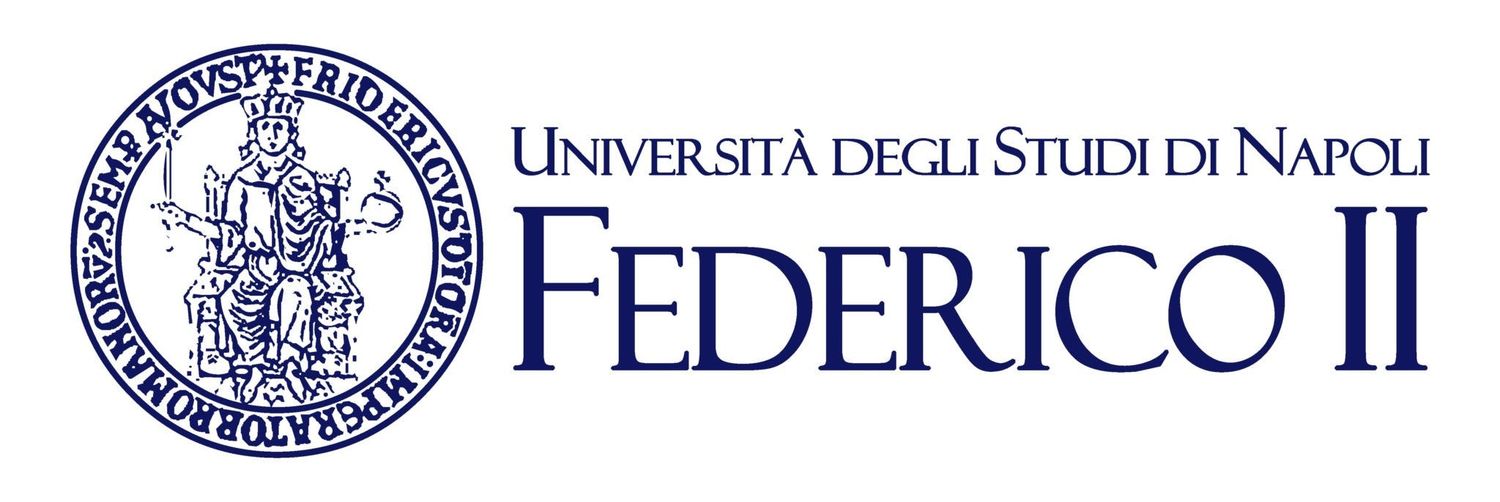预约演示
更新于:2025-12-04
Cortisone acetate
醋酸可的松
更新于:2025-12-04
概要
基本信息
权益机构- |
最高研发阶段批准上市 |
最高研发阶段(中国)批准上市 |
特殊审评- |
登录后查看时间轴
结构/序列
分子式C23H30O6 |
InChIKeyITRJWOMZKQRYTA-RFZYENFJSA-N |
CAS号50-04-4 |
关联
8
项与 醋酸可的松 相关的临床试验ChiCTR2300078524
Perioperative safety assessment of steroid-sparing protocol in neuroendoscopic resection for pituitary adenoma: A prospective, randomized, controlled clinical study
开始日期2022-09-30 |
申办/合作机构- |
NCT03760835
Congenital Adrenal Hyperplasia: Innovative Once Daily Dual Release Hydrocortisone Treatment
This is a controlled, open study designed to compare the effects of dual-release hydrocortisone preparations versus conventional glucocorticoid therapy on clinical, anthropometric parameters, metabolic syndrome, hormonal profile, bone status, quality of life, reproductive, sexual and psychological functions and treatment compliance in patients affected by congenital adrenal hyperplasia due to 21 OH deficiency.
开始日期2016-08-11 |
IRCT2016053028173N2
The Effect of local Injection of Cortone on Pain preception after Root Canal treatment of teeth with Irreversible Pulpits
开始日期2016-08-05 |
100 项与 醋酸可的松 相关的临床结果
登录后查看更多信息
100 项与 醋酸可的松 相关的转化医学
登录后查看更多信息
100 项与 醋酸可的松 相关的专利(医药)
登录后查看更多信息
8,178
项与 醋酸可的松 相关的文献(医药)2025-12-31·STRESS-THE INTERNATIONAL JOURNAL ON THE BIOLOGY OF STRESS
Differences in hair cortisol to cortisone ratio between depressed and non-depressed adolescent women
Article
作者: Garel, Patricia ; Herba, Catherine M. ; Porter-Vignola, Elyse ; Marin, Marie-France ; Zerroug, Yasmine
Research on stress has demonstrated that the hypothalamic-pituitary-adrenal (HPA) axis contributes to major depressive disorder in youth. Hair glucocorticoids are key biological markers of chronic stress. We assessed group differences in hair cortisol and cortisone concentrations, and the cortisol/cortisone ratio between depressed adolescent women and a non-depressed comparison group. Further, within the depression group, we explored the contribution of symptom severity and clinical correlates of depression in relation to glucocorticoid concentrations. Hair samples of three centimeters for 74 adolescent women (41 in the depression group and 33 in the comparison group), aged between 12 and 19 years old, were analyzed. Depressive and anxiety symptoms were measured using the Beck Youth Inventory II and clinical correlates of depression were measured using the Childhood Trauma Questionnaire-Short Form and the Borderline Personality Features Scale for Children. No significant differences emerged between the depression group and the comparison group on hair cortisol or hair cortisone concentrations. However, groups differed significantly on the cortisol/cortisone ratio, a proposed proxy of 11-beta-hydroxysteroid dehydrogenase activity, with a higher ratio for the depression group. Within the depression group, neither symptom severity nor clinical correlates were associated with glucocorticoid concentrations. Although cross-sectional, our findings highlight the importance of future studies to test whether the group difference found in cortisol/cortisone ratio is the result of alterations in 11-beta-hydroxysteroid dehydrogenase enzymes (type 1 or 2) activity. Further research is thus needed to clarify the role of these enzymes in major depressive disorder in youth and to develop more targeted intervention strategies.
2025-12-01·WATER RESEARCH
High-throughput suspect screening of priority hormone-disrupting chemicals in megacity aquatic ecosystems using a domain-specific database framework
Article
作者: Guo, Tianrong ; Yue, Qingnan ; Yang, Zhirui ; Shi, Xiaoshuang ; Qiao, Binzong ; Wu, Wenlin ; Chen, Yi ; Pu, Shengyan ; Feng, Yanqi ; Xiao, Quanwei ; Hou, Yu
The impact of hormones on ecological environments and human health is a growing concern. However, due to limitations in monitoring technologies and interdisciplinary research, most existing studies have mostly been confined to specific media (e.g., surface water) or individual pollutants. As a result, comprehensive screening and risk assessment of hormone-disrupting chemicals (HDCs) across the entire aquatic ecosystem chain in megacities remains lacking. To address this gap, we developed high-throughput sample pretreatment methods and established a suspect screening and identification strategy based on a custom-built electronic identity database for 86 HDCs. This strategy was first validated in a typical megacity. The results showed that 17.85% of 406 samples collected from four rivers and three lakes tested positive, with 24 different HDCs identified. Estrogens were detected in all matrices, while glucocorticoids showed significant concentrations in surface water, sediments, and suspended solids. Spatiotemporal analysis indicated higher concentrations in spring and summer, showed a progressive increase downstream. Source-sink analysis identified domestic sewage, medical wastewater, and aquaculture wastewater as the primary pollution sources. Hexestrol, Penbutolol, and Cortisone acetate were identified as priority control targets. This study enhances our understanding of HDCs and supports their assessment and management in global megacity aquatic ecosystems.
2025-11-18·ENVIRONMENTAL SCIENCE & TECHNOLOGY
High-Throughput Effect-Directed Analysis of Androgenic Compounds in Hospital Wastewater: Identifying Effect Drivers through Non-Target Screening Supported by Toxicity Prediction
Article
作者: Brack, Werner ; Muratuly, Aset ; Alvarez-Mora, Iker ; Hollert, Henner ; Johann, Sarah ; Krauss, Martin ; Muz, Melis ; Arturi, Katarzyna ; Huber, Carolin ; Jünger, Florian
The increasing number of contaminants released into the environment necessitates innovative strategies for their detection and identification, particularly in complex environmental matrices like hospital wastewater. Hospital effluents contain both natural and synthetic hormones that might significantly contribute to endocrine disruption in aquatic ecosystems. In this study, HT-EDA has been implemented to identify the main effect-drivers (testosterone, androsterone and norgestrel) from hospital effluent using microplate fractionation, the AR-CALUX bioassay and an efficient data processing workflow. Through nontargeted screening, over 5000 features (ESI+) were initially detected, but our workflow's prioritization based on androgenic activity prediction reduced the number of features requiring further analysis by over 95%, significantly streamlining the workload. In addition, the semiquantitative nontarget analysis allowed for the calculation of the contribution of an identified compound to the total activity of the sample without the need for reference standards. While this contribution was low (∼4.3%) and applicable to only one compound (1,4-androstadiene-3,17-dione), it presents the first approach for calculating such contributions without relying on standards. Compared to the available alternatives our workflow demonstrates clear environmental relevance by enhancing HT-EDA for more efficient identification and prioritization of effect-drivers in hospital effluents, and it can be adapted to address other environmental threats in complex mixtures.
59
项与 醋酸可的松 相关的新闻(医药)2025-12-03
·用药优化
注射用英夫利西单抗(类克®)【药品说明书】
警示语:严重感染和恶性肿瘤
严重感染:使用本品进行治疗的患者发生严重感染的风险增高,可导致住院或死亡。发生感染的多数患者正在合并使用免疫抑制剂,如甲氨蝶呤或糖皮质激素。
如果患者发生严重感染或脓毒症,应停用本品。
报告的感染包括:
• 活动性结核病,包括潜伏性结核病的复发。结核病患者经常伴随出现弥散性或肺外疾病。需在本品治疗前及治疗期间检测患者是否存在潜伏性结核病。如检查结果为阳性,则应在本品用药前对潜伏性结核病进行治疗。
• 侵袭性真菌感染,包括:组织胞浆菌病、球孢子菌病、念珠菌病、曲霉病、芽生菌病和肺囊虫病。组织胞浆菌病或其它侵袭性真菌感染患者多表现为弥散性,而非局灶性的疾病。在某些存在活动性感染的患者中,组织胞浆菌病的抗原和抗体检测结果可能是阴性的。若重度系统性疾病患者存在发生侵袭性真菌感染的危险,应考虑进行经验性的抗真菌治疗。
• 细菌、病毒及其它条件致病菌导致的感染,包括军团杆菌和李斯特菌。
对慢性或复发性感染患者治疗前,应慎重考虑本品治疗的风险和获益。
在本品治疗期间及治疗后,应密切监测患者是否出现感染的症状和体征,包括开始治疗前潜伏性结核病感染检测结果为阴性的患者。
恶性肿瘤:有报告显示,儿童和青少年患者使用包括本品在内的肿瘤坏死因子(TNF)抑制剂治疗时,有淋巴瘤和其它恶性肿瘤的发生,其中有些是致命的。
本品上市后,已经有报告在接受包括本品在内的 TNF 抑制剂治疗的患者中出现了肝脾 T-细胞淋巴瘤(HSTCL)病例,这是一种罕见的 T-细胞淋巴瘤。这些病例的病程呈侵袭性,可以导致死亡,绝大多数发生在克罗恩病或溃疡性结肠炎患者中,且大多数为青少年或青年男性。几乎上述所有患者均在接受 TNF 抑制剂时或之前短时间内接受过硫唑嘌呤或 6-巯基嘌呤的治疗。
【通用名称】注射用英夫利西单抗
【商品名称】类克â
【英文名称】Infliximab for Injection
【汉语拼音】Zhusheyong Yingfulixi Dankang
【成份】主要成份:英夫利西单抗
辅料:蔗糖、吐温 80、磷酸二氢钠(或磷酸二氢钠一水合物)、磷酸氢二钠(或磷酸氢二钠一水合物)
【性状】本品为白色固体,溶解后为无色至淡黄色液体,泛乳白色光,无异物。
【适应症】
类风湿关节炎:本品是疾病控制性抗风湿药物。对于中重度活动性类风湿关节炎患者,本品与甲氨蝶呤合用可用于:
●减轻症状和体征;
●改善身体机能,预防患者残疾。
成人及6岁以上儿童克罗恩病:本品可用于对于接受传统治疗效果不佳的中重度活动性克罗恩病的成人和6岁及以上的儿童患者,用于:
●减轻症状和体征;
●诱导并维持临床缓解;
●诱导成人患者的粘膜愈合;
●改善生活质量;
●使成人患者减少皮质激素用量或停止使用皮质激素。
瘘管性克罗恩病:对于瘘管性克罗恩病患者,本品可用于:
●减少肠-皮肤瘘管和直肠-阴道瘘管的数量,促进并维持瘘管愈合;
●减轻症状和体征;
●改善生活质量。
强直性脊柱炎:对于活动性强直性脊柱炎患者,本品可用于:
●减轻症状和体征,包括增加活动幅度;
●改善身体机能;
●改善生活质量。
银屑病:本品用于需系统治疗且对环孢霉素、甲氨蝶呤或光化学疗法等其它系统治疗无效、禁忌或不耐受的慢性重度斑块型银屑病成年患者。本品仅用于能在医师的密切监测下进行治疗并由医生进行定期随访的患者。
成人溃疡性结肠炎:对于接受传统治疗效果不佳、不耐受或有医学禁忌的中重度活动性溃疡性结肠炎成年患者,本品可用于:减轻症状和体征、诱导并维持临床缓解和粘膜愈合、使患者减少或停止使用糖皮质激素。
【规格】100mg/支
【用法用量】
用法:静脉输注。
用量:
类风湿关节炎:首次给予本品3mg/kg,然后在首次给药后的第2周和第6周及以后每隔 8 周各给予一次相同剂量。本品应与甲氨蝶呤合用。对于疗效不佳的患者,可考虑将剂量调整至10mg/kg,和/或将用药间隔调整为4周。
成人中重度活动性克罗恩病、瘘管性克罗恩病:首次给予本品5mg/kg,然后在首次给药后的第2周和第6周及以后每隔8周各给予一次相同剂量。对于疗效不佳的患者,可考虑将剂量调整至10mg/kg。
儿童中重度活动性克罗恩病(6至17岁):首次给予本品5mg/kg,然后在首次给药后的第2周和第6周及以后每隔8周各给予一次相同剂量。现有数据不支持在治疗最初10周内未产生应答的儿童和青少年中继续给予本品治疗。
某些患者可能需要一个更短的给药间隔以维持其临床获益,而对于另一些患者而言延长给药间隔也可以产生足够的临床获益。增加剂量至超过 5mg/kg,每 8 周给予一次的儿童克罗恩病患者发生不良反应的风险可能升高。对于剂量调整后没有获得更多治疗获益的患者,应仔细考虑是否采用调整后的剂量继续治疗。
本品的安全性和疗效尚未在 6 岁以下克罗恩病患儿中进行研究。目前现有的药代动力学数据在药代动力学特征中进行了介绍,但无法对 6 岁以下儿童给出用法用量建议。
强直性脊柱炎:首次给予本品 5mg/kg,然后在首次给药后的第 2 周和第 6 周及以后每隔 6 周各给予一次相同剂量。
斑块型银屑病:首次给予本品5mg/kg,然后在首次给药后的第 2 周和第 6 周及以后每隔 8 周各给予一次相同剂量。若患者在第14周后(即4次给药后)没有应答,不应继续给予本品治疗。
银屑病患者再次给药:银屑病患者相隔 20 周后再次单次给药的经验有限,与最初的诱导治疗相比,提示本品的有效性降低,且轻到中度输液反应增加。
疾病复发后,有限的反复诱导治疗经验表明,与8周维持治疗相比,输液反应增加(包括严重反应)。
如维持治疗中断,不推荐再次启动诱导治疗,应按照维持治疗再次给药。
成人溃疡性结肠炎:首次给予本品5mg/kg,然后在首次给药后的第2周和第6周及以后每隔 8 周各给予一次相同剂量。
输液反应用药说明:本品静脉给药时间不得少于 2 小时。接受本品给药的所有患者应在输注后至少观察1~2 小时,以观察急性输液相关反应。医院需配备肾上腺素、抗组胺药、糖皮质激素及人工气道等急救物品。
根据医生判断,患者可接受如抗组胺药、氢化可的松和/或对乙酰氨基酚预处理,同时降低输注速度,以减少输液相关反应的风险,特别是对于以前曾发生过输液相关反应的患者更应慎重。
输液期间,可以通过减慢输液速度或者暂停输液来改善轻中度输液反应,一旦反应得到缓解,可以按照较低的输液速度重新开始输液,和/或给予抗组胺药、对乙酰氨基酚和/或糖皮质激素等治疗性药物。对于经过上述干预后仍无法耐受药物输注的患者,应立即停药。
输液期间或输液后,对于出现重度输液相关性超敏反应的患者,应停止本品治疗。根据所出现的输液反应的症状和体征对重度输液反应进行处理。应配备适当的人员和药物,以备发生过敏反应时给予及时的治疗。
使用指导:应进行无菌操作。
1. 计算剂量,确定本品的使用瓶数:本品每瓶含英夫利西单抗100mg,计算所需配制的本品溶液总量。
2. 使用配有21号(0.8mm)或更小针头的注射器,将每瓶药品用 10ml 无菌注射用水溶解:除去药瓶的翻盖,用医用酒精棉签擦拭药瓶顶部,将注射器针头插入药瓶胶盖,将无菌注射用水沿着药瓶的玻璃壁注入。如药瓶内的真空状态已被破坏,则该瓶药品不能使用。轻轻旋转药瓶,使药粉溶解。避免长时间或用力摇晃,严禁振荡。溶药过程中可能出现泡沫,放置 5 分钟后,溶液应为无色或淡黄色,泛乳白色光。由于英夫利西单抗是一种蛋白质,溶液中可能会有一些半透明微粒。如果溶液中出现不透明颗粒、变色或其它物质,则不能继续使用。
3. 用0.9%氯化钠注射液将本品的无菌注射用水溶液稀释至250ml:从250ml 0.9%氯化钠注射液瓶或袋中抽出与配制的本品溶液总量相同的液体量,之后,将配置好的本品溶液总量全部注入该输液瓶或袋中,轻轻混合。最终获得的输注溶液浓度范围应在 0.4mg/ml 至 4mg/ml 之间。请勿使用其他溶剂对本品溶液进行稀释。
4. 本品输注应在复溶并稀释后3 小时内进行。输液时间不得少于 2 小时:输液装置上应配有一个内置的、无菌、无热原、低蛋白结合率的滤膜(孔径≤1.2μm)。本品不含抗菌防腐剂,未用完的输液不应再贮存使用。
5. 未进行本品与其它药物合用的物理生化兼容性研究,本品不应与其它药物同时进行输液。
经胃肠道外给药的产品在给药前应目检是否存在微粒物质或变色现象。如果发现存在不透明颗粒、变色或其它异物,则该药品不可使用。
【不良反应】临床试验中报告的最常见的药物不良反应(ADR)是上呼吸道感染,英夫利西单抗组与对照组的发生率分别为 25.3%和 16.5%。与包括本品在内的 TNF 抑制剂使用有关的最严重的药物不良反应包括乙型肝炎病毒(HBV)再激活、充血性心力衰竭(CHF)、严重感染(包括脓毒症、机会性感染和结核病)、血清病(迟发性超敏反应)、血液系统反应、系统性红斑狼疮/狼疮样综合征、脱髓鞘性疾病、肝胆事件、淋巴瘤、肝脾 T 细胞淋巴瘤(HSTCL)、白血病、Merkel 细胞癌、黑色素瘤、儿童恶性肿瘤、结节病/肉瘤样反应、肠道或肛周脓肿(在克罗恩病中)和严重的输液反应。
表1列出了基于临床研究及上市后经验的药物不良反应(其中一些为致死性病例)。在器官系统分类内,根据发生频率将不良反应分类如下:十分常见(≥1/10);常见(≥1/100,<1/10);偶见(≥1/1000,<1/100);罕见(≥1/10000,<1/1000);十分罕见(<1/10000);未知(无法从现有数据估算)。在每个频率组中,不良反应按严重程度以降序排列。
表 1:临床研究和上市后经验中发现的不良反应
*包括牛结核病(播散性BCG 感染),见【注意事项】
**在一项中国临床试验中,在使用本品治疗溃疡性结肠炎的患者中报告了 1 例中度缺血性视神经病变,症状持续未缓解,与本品的相关性不明确。
输液反应:输液相关反应在临床试验中被界定为输液过程中或输液后1 小时内发生的任何不良事件。在 III 期临床试验中,输液中和输液结束后的 1 小时内,英夫利西单抗组和安慰剂组患者的输液相关反应发生率分别为 18%与 5%。在诱导期发生输液反应的英夫利西单抗组患者中有 27%的患者在维持期也发生了输液反应。而在诱导期未发生输液反应的患者中 9%的患者在维持期发生了输液反应。
在所有的本品输注中,3%的患者会伴随出现发热或寒战等非特异性症状,1%的患者伴随出现心肺反应(主要表现为胸痛、低血压、高血压或呼吸困难),低于 1%的患者伴随出现瘙痒、荨麻疹,或同时出现瘙痒/荨麻疹症状及心肺反应。低于 1%的患者出现了严重输液反应,包括:过敏反应、惊厥、红斑和低血压。约 3%的患者因与输液相关的反应而中断治疗。所有发生上述反应的患者经过治疗和/或停止输液后均康复。总体上多次药物输注并不会使上述事件的发生率增加。在银屑病研究 I(EXPRESS)中,输液反应发生率在银屑病患者一年的治疗中保持稳定。在银屑病研究 II(EXPRESS II)中,发生率随时间有所变化,最终输液后的发生率略高于最初输液后。在 3 项银屑病研究中,导致输液反应的输注占总输注次数的百分比(即 1 小时内发生的不良事件)在 3mg/kg 组 是 7%,5mg/kg组是 4%,安慰剂组是 1%。
与阴性患者相比,英夫利西单抗抗体呈阳性的患者更可能(大约 2~3 倍)出现输液反应。合并使用免疫抑制剂显示会降低英夫利西单抗抗体的出现以及输液反应发生率。
在一项类风湿关节炎临床试验(ASPIRE)中,最初3次输液时间超过2小时,未发生严重输液反应的患者后续输液时间可缩短,但不短于40分钟。该试验中66%(1040名中有 686 名)的患者至少接受过一次不超过 90 分钟的短时间输注,44%(1040 名中有454 名)的患者至少接受过一次不超过 60 分钟的短时间输注。至少接受过一次短时间输注的英夫利西单抗组有 15%(74/494)的患者发生了输液反应,0.4%(2/494)的患者发生了严重输液反应。尚未进行剂量大于 6mg/kg 的短时间输注研究。
克罗恩病患者临床研究(SONIC)中,英夫利西单抗单药治疗患者的输液相关反应发生率为16.6%(27/163),英夫利西单抗与硫唑嘌呤(AZA)合用患者与AZA单用患者的输液相关反应发生率分别为 5%(9/179)和 5.6%(9/161)。英夫利西单抗单用患者中发生 1 例严重输液反应(<1%)。
上市后监测中,有与使用本品相关的类似速发过敏反应的报告,包括喉水肿、咽部水肿、重度支气管痉挛和惊厥发作。在输注英夫利西单抗的过程中或2小时内,已有瞬时性视觉丧失的报道。已有开始本品输注后24小时内脑血管意外、心肌缺血/梗死(有些是致命的)和心率不齐发生的报道。
再次给药后的输液反应:在类风湿关节炎、克罗恩病和银屑病临床试验中,停药一段时间后再次给予本品输液反应的发生率高于常规的维持治疗。
一项在中重度银屑病患者中进行的临床试验评价了本品长期维持治疗与诱导治疗后再次给予本品治疗的疗效和安全性(最多输注4次,分别在第0、2、6和14周)。试验中,间歇给药组中4%(8/219)的患者发生严重输液反应,而维持治疗组只有<1%(1/222)的患者发生严重输液反应。入组本试验的患者不接受任何免疫抑制剂的合并治疗。间歇给药组定义为诱导治疗(最多在第 0、2、6和14周4次输注)后,经过一段时间无治疗,根据疾病的复发再次给予本品。本试验中,主要的严重输液反应发生在第 2 周的第2 次输注。症状包括但不仅限于呼吸困难、荨麻疹、面部浮肿和低血压。在这些病例中,停止本品治疗和/或使用其它疗法后体征和症状完全消退。
迟发性超敏反应:临床试验中迟发性超敏反应不常见,且发生在本品停药期间不足一年的患者中。银屑病研究中,大约 1%的本品治疗组患者出现了迟发性超敏反应,该反应发生于治疗早期。症状和体征包括肌肉疼痛和/或关节痛、出现发热和/或皮疹,部分患者出现皮肤瘙痒、面部水肿、手或唇水肿、吞咽困难、荨麻疹、喉痛和头痛。
本品停药间期超过一年的迟发性超敏反应发生率数据不充足,但有限的临床研究显示,随着本品停药间期的延长,迟发性超敏反应风险增高。
为期一年的临床研究中,克罗恩病患者重复输液(ACCENT I)的血清病样反应发生率为 2.4%。
免疫原性:使用本品治疗时可能会出现英夫利西单抗抗体。测量患者样本中英夫利西单抗抗体所用的检测方法可能会受到血清中英夫利西单抗的干扰,从而低估患者抗体发生率。
在接受3剂诱导方案治疗后进行维持用药 1~2 年的患者中,英夫利西单抗抗体的发生率大约是 10%。在经过>16 周的无药期后接受本品治疗的克罗恩病患者中,观察到英夫利西单抗抗体的发生率增高。在一项银屑病关节炎研究中,有 191 名患者在使用或不使用甲氨蝶呤(MTX)的情况下接受了 5mg/kg 剂量用药。结果显示,15%的患者出现了英夫利西单抗抗体,大多数抗体呈阳性的患者其滴度较低,与抗体阴性患者相比,抗体阳性患者更可能具有较高的清除率,因而可能降低疗效,出现输液反应。在接受 6-巯基嘌呤/硫唑嘌呤(6-MP/AZA)或 MTX 等免疫抑制剂治疗的类风湿关节炎和克罗恩病患者中,抗体的出现较少见。
银屑病研究 II 包括了5mg/kg 和3mg/kg剂量组,在按照5mg/kg 剂量、每8周用药一次进行了一年治疗的患者中,观察到 36%的患者产生抗体;在按照 3mg/kg 剂量、每 8周用药一次进行了一年治疗的患者中,这一比例是 51%。银屑病研究 III(SPIRIT)也包括了5mg/kg 和 3mg/kg 剂量组,在按照 5mg/kg 剂量诱导方案(0、2 和 6 周)进行治疗的患者中,观察到 20%的患者产生抗体;在按照 3mg/kg 剂量进行诱导治疗的患者中,这一比例是 27%。虽然抗体形成增多,但银屑病研究 I 和研究 II 中(按照 5mg/kg 剂量进行诱导治疗之后每 8 周一次进行为期一年的维持治疗的患者)以及银屑病研究 III(按照5mg/kg 剂量进行诱导治疗的患者)中患者输液反应的发生率(14.1%~23.0%)和严重输液反应的发生率(<1%)与在其它研究人群中观察到的比例近似。银屑病患者与其它疾病患者相比,在长期接受本品治疗后,尚不知免疫原性的增高是否对疗效以及输液反应发生率有影响。
感染:在接受本品治疗的患者中曾观察到有结核、包括脓毒症和肺炎的细菌感染、侵袭性真菌感染、病毒感染和其它机会性感染,其中部分感染是致命的。死亡率超过 5%的最常报告的机会性致病菌感染包括肺囊虫病、念珠菌病、李斯特菌病和曲霉病。
在临床研究中,英夫利西单抗组患者的感染率为36%,安慰剂组患者的感染率为25%。
在类风湿关节炎临床试验中,英夫利西单抗与甲氨蝶呤合用组患者严重感染发生率(包括肺炎)高于甲氨蝶呤单用组,剂量在 6mg/kg 或以上时更为突出。
上市后自发报告中,最常见的严重不良事件为感染,部分为致死性病例。近 50%的死亡报告与感染相关。已报告的结核病例包括粟粒性结核和肺外结核。
肝胆系统:根据本品上市后经验,已有黄疸和非传染性肝炎(其中一些具有自身免疫性肝炎的特征)病例的报告。
在临床试验中,观察到了使用本品的患者出现轻度或中度谷丙转氨酶(ALT)和谷草转氨酶(AST)升高,但未导致重度肝损伤。ALT升高至正常范围上限(ULN)的5倍或以上(见表 2)。英夫利西单抗组(单用或与其它免疫抑制剂合用)患者转氨酶(ALT比 AST 更常见)升高比例高于对照组(见表 2)。大多数转氨酶异常是一过性的,但少数患者转氨酶升高的时间较长。一般情况下,ALT 和 AST 升高的患者均未出现症状,在继续使用本品、停用本品或调整合并用药后,该异常现象可减轻或消除。
表 2:临床试验中 ALT 活性升高患者的比例
恶性肿瘤和淋巴增生性疾病:英夫利西单抗临床治疗中,5780 例患者(5494 患者-年)中发现 5 例淋巴瘤和 26 例非淋巴瘤恶性肿瘤,而安慰剂组的 1600 例患者(941 患者-年)发现 1 例非淋巴瘤恶性肿瘤,无淋巴瘤。
在长达5年的英夫利西单抗长期安全性随访研究中,3210例患者(6234 患者-年)报告了5例淋巴瘤和 38例非淋巴瘤恶性肿瘤。
上市后用药经验中报告了包括淋巴瘤的恶性肿瘤病例。
在一项中重度慢性阻塞性肺病(COPD)探索性临床研究中(现吸烟者或有吸烟史患者),本品给药剂量类似于类风湿关节炎和克罗恩病成人患者的治疗剂量,9例发生恶性肿瘤(包括1例淋巴瘤),随访期中位值为0.8年[发生率 5.7%(95%置信区间2.65%~10.6%)]。对照组77例患者中有1例恶性肿瘤报告,随访期中位值为0.8年[发生率 1.3%(95%置信区间 0.03%~7.0%)]。大多数恶性肿瘤为肺癌或头颈部癌。一项基于人群的回顾性队列研究发现,与未接受过生物制剂组或普通人群(包括60岁以上)相比,使用英夫利西单抗的类风湿性关节炎女性患者中宫颈癌的发生率升高。
此外,上市后使用本品所报告的肝脾 T 细胞淋巴瘤病例绝大多数发生在克罗恩病或溃疡性结肠炎患者中,且大多数为青少年或青年男性。
抗核抗体(ANA)/抗双链脱氧核糖核酸(dsDNA)抗体:临床试验中,基线时抗核抗体(ANA)阴性的英夫利西单抗组患者约有一半在治疗中ANA呈阳性,此现象在安慰剂组患者中的发生率约为 20%。在英夫利西单抗组患者中抗 dsDNA 抗体的转阳率约为17%,而在安慰剂组患者中为 0%。少见狼疮及狼疮样综合征的报告。
充血性心力衰竭:在中重度心力衰竭[纽约心脏学会心功能分级(NYHAIII/IV)级,且左心室射血分数<35%]患者参加的临床试验中,有150名患者随机分为英夫利西单抗 10mg/kg、5mg/kg或安慰剂组,在第0、2和6周接受三次药物输注。结果显示,在接受 10mg/kg 剂量本品治疗的患者中观察到了较高的死亡率,且因心力衰竭导致的住院发生率增高。到一年时,8名10mg/kg本品组患者死亡,5mg/kg本品组和安慰剂组各有4名患者死亡。与安慰剂组相比,在10mg/kg 和 5mg/kg 本品治疗组中,发生呼吸困难、低血压、心绞痛和头晕的几率有增高的趋势。尚未在轻度心力衰竭(NYHA 分类 I/II)患者中进行本品研究。
上市后经验显示,使用本品的患者(无论有无明显诱发因素)有心力衰竭加重的报告。
已有初发性心力衰竭(包括无已知既往心血管疾病的患者出现的心力衰竭)报告,其中一些患者的年龄在 50 岁以下。
儿童克罗恩病患者的不良反应:总体上,接受本品治疗的儿童克罗恩病患者发生的不良事件的频率和类型与成人克罗恩病患者类似。以下段落描述了与成人之间的差异及其他特殊考虑事项。
在103例随机接受本品5mg/kg(截至54周)治疗的儿童克罗恩病患者中,以下不良事件的报告频率高于385例接受类似治疗方案的成人克罗恩病患者:贫血(10.7%)、便血(9.7%)、白细胞减少症(8.7%)、潮红(8.7%)、病毒感染(7.8%)、中性粒细胞减少症(6.8%)、骨折(6.8%)、细菌性感染(5.8%)和呼吸道过敏反应(5.8%)。
REACH 研究中有56.3%的随机分组受试者报告了感染,ACCENT I研究中有50.3%接受本品5mg/kg的受试者报告了感染。在 REACH 研究中,每8周输液的受试者报告感染的频率高于每12周输液的受试者(分别为 73.6%和 38.0%),每 8 周维持治疗组和每12 周维持治疗组分别有 3 例和 4 例受试者报告了严重感染。最常报告的感染为上呼吸道感染和咽炎,最常报告的严重感染为脓肿。有 3 例患者报告了肺炎,其中每 8周维持治疗组有2例,每 12 周维持治疗组有 1 例。每 8 周维持治疗组有 2 例患者报告了带状疱疹。
总体而言,在REACH研究中,17.5%的随机分组患者发生了1次或多次的输液反应,在每 8 周和每12 周维持治疗组中分别为 17.0%和 18.0%。REACH 研究中没有严重输液反应,有 2 例受试者发生了非严重的速发过敏反应。
有3例(2.9%)儿童患者产生了本品的抗体。
老年患者(≥65岁):类风湿关节炎的临床研究中,65岁及以上患者合用本品与甲氨蝶呤治疗比65岁以下患者的严重感染发病率高,分别为11.3%和 4.6%。65 岁及以上患者单用甲氨蝶呤治疗比 65 岁以下患者的严重感染发病率高,分别为5.2%和2.7%。
上市后用药经验:本品上市后,在成人和儿童患者中报告有不良反应。由于这些事件为自发性报告,且样本量不确定,因此,很难确定其发生率,也不能明确事件与使用本品的因果关系。
在本品上市后的使用过程中,报告了以下不良反应,某些甚至为死亡,具体包括:中性粒细胞减少(包括尚未出生但在子宫中暴露于本品的婴儿)、间质性肺病(包括肺纤维变性/间质性肺炎和快速进展性疾病)、特发性血小板减少性紫癜、血栓性血小板减少性紫癜、心包积液、全身和皮肤脉管炎、多形性红斑、史蒂文斯-约翰逊综合征、中毒性表皮坏死溶解、外周脱髓鞘病(如:格-巴二氏综合征、慢性炎性脱髓鞘性多发性神经病和多灶性运动性神经病变)、开始本品输注后大约 24 小时内发生的脑血管意外、新发的和加重的银屑病(包括脓疱样的所有亚型,主要见于掌跖)、横贯性脊髓炎和神经病变(也观察到了其它神经病学反应)、急性肝功能衰竭、黄疸、肝炎和胆汁淤积、严重感染、原虫感染、(在子宫中暴露于本品后)由疫苗注射爆发的感染(包括弥散性卡介苗感染的牛结核)和恶性肿瘤(包括黑色素瘤、宫颈癌和Merkel 细胞癌)。
儿童用药的上市后经验中最常报告的严重不良事件为感染(有些致死),包括机会性感染和结核病、输液反应和超敏反应。本品用于儿童的上市后经验中,自发性严重不良事件也包括恶性肿瘤、一过性肝酶异常、狼疮样综合征和自身抗体阳性。
接受本品治疗的患者中曾报告过肝脾 T 细胞淋巴瘤的上市后病例,绝大多数病例发生于克罗恩病和溃疡性结肠炎,其中大部分为青少年或年轻成年男性。接受本品治疗的患者中罕有嗜血细胞性淋巴组织细胞增生症的报道。
输液相关性反应:在上市后使用中,曾出现过敏反应病例,包括喉/咽部水肿、重度支气管痉挛以及癫痫。
在本品治疗中,输液期间或者输液后2小时内曾报告短暂性视力丧失病例以及开始输注后 24 小时内曾报告心肌缺血/梗死和心率不齐病例。
【禁忌】●对英夫利西单抗、其它鼠源蛋白或本品中任何成份过敏的患者。
●患有结核病或其它活动性感染(包括脓毒症、脓肿、机会性感染等)的患者。
●患有中重度心力衰竭(纽约心脏学会心功能分级 III/IV 级)的患者。
【注意事项】严重感染:在接受本品治疗的患者中,发生严重感染的风险会增高,其中涉及了不同器官系统和部位,可能导致住院或死亡。
已经有报告在使用 TNF 抑制剂时,患者会出现因细菌、分枝杆菌、侵袭性真菌、病毒或寄生虫导致的机会性感染,包括曲霉病、芽生菌病、念珠菌病、球孢子菌病、组织胞浆菌病、军团杆菌、李斯特氏菌病、肺囊虫病和结核病。患者多表现为弥散性,而非局灶性的病变。
活动性感染的患者不应使用本品治疗,包括临床上重要的局部感染。对于年龄大于65 岁,存在合并疾病和/或同时服用糖皮质激素或甲氨蝶呤等免疫抑制剂的患者,其发生感染的风险会增高。在以下患者中,应在本品治疗开始前考虑治疗的风险和收益:
●有慢性或复发性感染;
●接触过结核病患者;
●存在机会性感染病史;
●在结核病或霉菌病的流行地区居住或旅行过的,如组织胞浆菌病、球孢子菌病或芽生菌病;
●罹患易于感染的病症。
结核病:在接受本品治疗的患者中,包括之前接受过潜伏性或活动性结核病治疗的患者中,已观察到活动性结核病病例,包括结核病复发或者新发结核感染。应注意报告的活动性结核病大多发生在肺外,有局灶性也有弥散性疾病。接受本品治疗的患者中,有在治疗潜伏性结核病期间发生活动性结核病的病例。
应在开始本品治疗前以及治疗期间定期评估患者是否存在结核病风险因素并检测是否存在活动或潜伏性感染。评估应包括患者的详细病史,包括结核病史、既往与结核患者密切接触史以及既往和当前接受免疫抑制治疗的情况。应对所有患者进行筛查,包括胸部影像学(推荐胸部 CT)和结核菌素试验,有条件者建议行结核分枝杆菌抗原特异性T 细胞酶联免疫斑点试验(T cell enzyme-linked immune-spot assay,T-SPOT.TB)。如确诊有活动性结核,不可使用本品治疗。
如果怀疑有潜伏性结核病,应咨询有结核病治疗专业知识的医生。如确诊有潜伏性结核病,应于本品治疗前遵从当地建议采用抗结核疗法治疗潜伏性结核病。已有显示在接受 TNF 抑制剂治疗前对潜伏性结核感染进行治疗可以降低治疗期间结核病复发的风险。在评价是否需要于本品治疗前对患潜伏性结核病的患者进行治疗时,即使是之前接种过卡介苗(BCG)的患者,若结核菌素皮肤试验显示存在 5 mm 或更大的硬结,应考虑检测结果属于阳性。需提醒处方医师,结核菌素皮试结果有假阴性风险,尤其是那些病重或免疫功能低下的患者更易得出假阴性结果。
对于既往有潜伏性或者活动性结核病史、但无法证实是否进行了足够疗程治疗的患者,以及潜伏性结核病检测结果为阴性、但存在结核感染危险因素的患者,应在开始本品用药前考虑接受抗结核治疗。在决定抗结核治疗是否适用于某一个体患者时,建议咨询在结核病治疗方面具有专业经验的医师。
对于本品治疗期间出现的新发感染,尤其是在之前或最近曾到过结核病高发国家旅行过的或者曾密切接触过患有活动性结核病患者的患者,强烈建议考虑结核病。应告知所有患者,如在本品治疗过程中或治疗后发生结核性体征/症状(即持续咳嗽、消瘦/体重下降、低热),则应寻求医疗救治。
监测:在接受本品治疗期间及治疗后,应密切监测患者是否出现感染的症状和体征,包括对开始治疗前潜伏性结核感染检测结果为阴性的患者。在本品治疗期间,潜伏性结核感染检测结果也可能呈假阴性。
在接受本品治疗期间,应定期评估结核风险,警惕肺外结核和播散性结核。治疗期间一旦诊断活动性结核,应立即停用本品,并予适当的抗结核治疗。
如果患者发生严重感染或脓毒症,应停用本品。对于本品治疗期间出现新发感染的患者,应采用一套适用于免疫缺陷患者的快捷、完整的诊断工序给予密切监测,同时应开始适当的抗菌治疗。
侵袭性真菌感染:对于在存在地方性霉菌病的地区居住或旅行过的患者,如果发生了严重的系统性疾病,应怀疑侵袭性真菌感染。应考虑在诊断期间对患者进行适当的经验性抗真菌治疗。某些存在活动性感染的患者中,组织胞浆菌病的抗原和抗体试验结果可能为阴性。如果可行,应咨询在侵袭性真菌感染诊断和治疗方面具有专业经验的医师来决定是否对该类患者进行抗真菌治疗,并考虑重度真菌感染与抗真菌治疗的风险。
恶性肿瘤:在接受包括本品在内的TNF抑制剂治疗的儿童、青少年和年轻成人中(治疗开始时的年龄≤18岁)已经报告出现过恶性肿瘤病例,有些致死。其中大约一半的病例为淋巴瘤,包括霍奇金和非霍奇金淋巴瘤。剩余的病例可表现为其它恶性肿瘤,包括通常与免疫抑制有关的、罕见的恶性肿瘤以及不常在儿童和青少年中观察到的恶性肿瘤。恶性肿瘤的中位发生时间是首剂TNF抑制剂治疗后的30个月(范围:1~84 个月)。多数患者正在接受合并的免疫抑制剂治疗。这些病例多在药品上市后报告,来自多个国家,包括登记的和自发的上市后报告。
淋巴瘤:在所有 TNF 抑制剂临床试验的对照研究中,与对照组相比,在接受 TNF 抑制剂治疗的患者中观察到了较多的淋巴瘤病例。在本品临床试验的对照研究和开放性研究中,5707名接受本品治疗的患者中,有5 名患者出现了淋巴瘤(中位随访持续时间是 1.0 年),而在 1600 名对照组患者中,无患者出现淋巴瘤(中位随访持续时间是 0.4 年)。在类风湿关节炎患者中,在每 100 患者-年的随访时间中观察到了 2 例淋巴瘤病例,发病率为0.08,与普通人群中预期的数值相比大约高出 3 倍。在汇总的类风湿关节炎、克罗恩病、银屑病关节炎、强直性脊柱炎、溃疡性结肠炎和斑块型银屑病临床试验人群中,在每 100患者-年的随访时间中观察到了 5例淋巴瘤病例,发病率为 0.10,与普通人群中预期的数值相比大约高出 4 倍。克罗恩病、类风湿关节炎或斑块型银屑病患者,尤其是罹患高度活动性疾病和/或长期接受免疫抑制剂治疗的患者,即使是在无 TNF 抑制剂治疗时,其发生淋巴瘤的危险可能要高于普通人群(高达几倍)。在 TNF 抑制剂上市后应用于类风湿关节炎和其它适应症时,曾报告过急性和慢性白血病病例。即使是在无 TNF 抑制剂治疗的情况下,类风湿关节炎患者发生白血病的危险也可能要高于普通人群(大约2 倍)。
儿童恶性肿瘤:接受 TNF 抑制剂(治疗开始时≤18 岁)(包括本品)用于治疗青少年特发性关节炎(JIA)、克罗恩病或其他病况的儿童、青少年和年轻成人(最大至 22 岁)患者中曾报告过上市后的恶性肿瘤病例,其中一些导致死亡。大约一半的报告为淋巴瘤。其他病例涉及多种不同的恶性肿瘤,包括不常见于儿童和青少年的恶性肿瘤。大部分患者合并使用免疫抑制剂,例如甲氨蝶呤、硫唑嘌呤或 6-巯嘌呤。TNF 抑制剂在儿童和青少年恶性肿瘤发生过程中发挥的作用仍然不明。
肝脾 T-细胞淋巴瘤(HSTCL):本品上市后,已经有报告在接受包括本品在内的 TNF 抑制剂治疗的患者中出现了肝脾 T-细胞淋巴瘤(HSTCL)病例,这是一种罕见的 T-细胞淋巴瘤。这些病例的病程呈侵袭性,可以导致死亡,绝大多数发生在克罗恩病或溃疡性结肠炎患者中,且大多数为青少年或青年男性。几乎上述所有患者均在接受 TNF 抑制剂时或之前短时间内接受过硫唑嘌呤或 6-巯基嘌呤的治疗。目前尚不确定 HSTCL 的发生是否与 TNF 抑制剂或 TNF 抑制剂与上述其它免疫抑制剂的联用有关。在对炎性肠病患者进行治疗时,特别是在青少年和年轻成人中,基于临床试验数据中获得的本品单药治疗时观察到的免疫原性与过敏反应增高的风险,以及联合治疗可能导致 HSTCL 的发生危险增高,应考虑选择本品单用还是与其它免疫抑制剂联用。当考虑给予患者英夫利西单抗单药治疗还是与其他免疫抑制剂如硫唑嘌呤或 6-巯基嘌呤联合治疗时,根据临床试验数据,需要权衡以下可能性,即联合治疗的 HSTCL风险更高,反之观察到英夫利西单抗单药治疗的免疫原性和超敏反应风险增加。
皮肤癌:在已经使用 TNF 抑制剂治疗包括使用本品的患者中已有黑色素瘤和 Merkel 细胞癌的报告。建议病人做定期的皮肤检查,特别是皮肤癌风险高的患者。
宫颈癌:一项基于人群的回顾性队列研究发现,与未接受过生物制剂组或普通人群(包括 60岁以上)相比,使用英夫利西单抗的类风湿性关节炎女性患者中宫颈癌的发生率升高。不排除本品与宫颈癌的因果关系。包括 60 岁以上的女性患者使用本品需进行定期筛查。
其它恶性肿瘤:在包括本品在内的某些TNF抑制剂临床试验的对照部分,与对照组患者相比,在接受 TNF 抑制剂治疗的患者中观察到了较多的恶性肿瘤病例[不包括淋巴瘤和非黑色素瘤皮肤癌(NMSC)]。在中重度类风湿关节炎、克罗恩病、银屑病关节炎、强直性脊柱炎、溃疡性结肠炎和斑块型银屑病患者中进行的本品试验的对照部分,4019 名接受本品治疗的患者中,有 14 名患者被确诊为恶性肿瘤(不包括淋巴瘤和 NMSC),而在 1597 名对照组患者中,只有 1 名患者出现恶性肿瘤(本品治疗组患者的发生率为 0.52/100 患者-年,对照组患者的发生率为 0.11/100 患者-年),本品治疗组患者的中位随访持续时间是 0.5年,对照组为 0.4 年。其中,最常见的恶性肿瘤是乳腺癌、结肠直肠癌和黑色素瘤。本品治疗组患者中恶性肿瘤的发生率与普通人群中预期的发生率近似,而对照组患者低于普通人群的预期发生率。
在中重度慢性阻塞性肺病(COPD)临床试验中,与对照组患者相比,本品治疗组患者报告了更多的恶性肿瘤病例,其中大多数为肺部或头颈部。所有的患者均存在重度吸烟史。在中重度 COPD 患者中使用本品时,处方医师应谨慎用药。
应监测银屑病患者是否出现非黑色素瘤皮肤癌(NMSCs),特别是那些既往接受过长期光照治疗的患者。在本品临床试验的维持治疗部分,显示NMSCs 更常见于之前进行过光照治疗的患者。
TNF抑制剂治疗在恶性肿瘤发生中可能起到的作用尚不清楚。本品临床试验中所显示的疾病发生率无法与其它TNF抑制剂临床试验中的发生率相比较,也不可以用于预测更广泛患者群中观察到的发生率。在考虑对存在恶性肿瘤病史的患者进行本品治疗,或者是考虑对本品治疗期间发生了恶性肿瘤的患者继续治疗时,应慎重。
结肠不典型增生或结肠癌风险增加(例如长期溃疡性结肠炎或原发性硬化性胆管炎患者)或有不典型增生或结肠癌病史的所有溃疡性结肠炎患者,应在治疗前和整个病程中定期筛查不典型增生。按照当地建议,此评价应包括结肠镜和活组织检查。现有数据未明确本品治疗是否会影响发生不典型增生或结肠癌的风险。由于接受本品治疗的新发不典型增生的患者发生癌症风险增加的可能性尚未建立,因此应谨慎评价患者个体的风险和获益,并应考虑停药。
乙型肝炎病毒再激活:在慢性病毒携带者(如表面抗原阳性)中,使用包括本品在内的 TNF 抑制剂,曾出现过乙型肝炎病毒(HBV)再激活的病例。某些情况下,伴随 TNF 抑制剂治疗出现的HBV 再激活可能是致死性的。其中大多数的报告发生在同时接受其它系统性免疫抑制药物治疗的患者中,这些药物也会导致 HBV 再激活。
在开始包括本品在内的 TNF 抑制剂治疗前,应根据国内现行指南检测患者是否出现 HBV 感染。对于乙型肝炎表面抗原检测结果呈阳性的患者,建议咨询在乙型肝炎治疗方面具有专业经验的医师,预防性使用适当的药物抗病毒治疗。对于 HBV 携带者,联合抗病毒治疗与 TNF 抑制剂治疗的安全性或疗效尚未获得充足的数据。对于需要接受 TNF抑制剂治疗的 HBV 携带者,在整个治疗期间应密切监测是否出现活动性 HBV 感染的临床和实验室指征,并在治疗结束后的几个月继续进行监测。在发生 HBV 再激活的患者中,应停用 TNF 抑制剂,并开始抗病毒治疗以及适当的支持治疗。目前尚不清楚 HBV再激活后重新开始 TNF 抑制剂治疗的安全性。因此,此种情况下处方医师应谨慎考虑恢复 TNF 抑制剂的治疗并给予患者密切监测。
肝脏毒性:在接受本品治疗的患者中,上市后数据中已有报告重度肝脏反应,包括急性肝功能衰竭、黄疸、肝炎和胆汁淤积,其中某些病例被确诊为自身免疫性肝炎。一些肝脏反应发生于本品开始治疗后的 2 周至超过一年,其中的许多病例在发现肝脏损伤前并未观察到肝转氨酶水平的增高,某些病例是致死性的或必须进行肝脏移植。对于出现肝功能不全症状或体征的患者,应评估是否存在肝损伤的证据。如果出现黄疸和/或显著的肝酶增高(例如,大于 5 倍的正常范围上限),应停用本品,并对异常进行全面的检查。在临床试验中,已经在接受本品治疗的患者中观察到了轻度或中度的 ALT 和 AST 增高,但没有进展至重度肝损伤的病例。
心力衰竭患者:在心力衰竭患者中,本品治疗会伴随出现不良结果,只在其它治疗不可行时才可在心力衰竭患者中使用本品。在评价心力衰竭(NYHA 心功能分级为 III/IV 级)患者使用本品的随机分组研究中,接受 10mg/kg 本品治疗的患者死亡率增高,5mg/kg 和 10mg/kg剂量组心血管不良事件的发生率增高。已有过本品用药患者出现心力衰竭加重的上市后报告(存在或不存在可鉴别的预测因素)。新发心力衰竭上市后罕有报告,包括对既有心血管疾病不知情的患者,其中某些患者年龄小于 50 岁。如果决定对心力衰竭患者使用本品,则应在治疗期间给予密切监测,且在出现新的心力衰竭症状或症状加重时停用本品。
输液反应/过敏反应:本品治疗可能伴随出现过敏反应(包括过敏性休克和迟发性超敏反应),但发生时间较为多变,某些病例可能需要住院。多数过敏反应(包括荨麻疹、呼吸困难和/或支气管痉挛、喉水肿、咽部水肿和低血压)发生于本品输注期间或者输注后 2 小时内。
不过,在某些病例中,于最初的英夫利西单抗治疗后(即早在第二剂后),以及在长时间本品治疗停止后重新开始本品治疗时,在患者中观察到了血清病样反应。伴随上述反应会出现以下症状:发热、皮疹、头痛、咽喉痛、肌痛、多关节痛、手面部水肿和/或吞咽困难。这些反应会伴随出现显著的英夫利西单抗抗体增高、无法检测到英夫利西单抗的血清浓度以及可能丧失药物疗效。
若出现重度过敏反应,应停用本品。医院需配备治疗过敏反应的药物(例如,对乙酰氨基酚、抗组胺药、糖皮质激素和/或肾上腺素)。
在类风湿关节炎、克罗恩病和银屑病临床试验中,与规律的维持治疗相比,经过一个阶段停药后,重新给予本品会使输液反应的发生率增高。经过一段时间停药后重新给予本品,特别是决定重新开始 0、2 和 6 周诱导方案时,应认真考虑收益-风险比。如银屑病患者维持治疗中断,不推荐再次启动诱导治疗,应按照维持治疗再次给药。
自身免疫:使用本品治疗可能会促使自身抗体的形成以及狼疮样综合征的出现。若患者在接受本品治疗时出现狼疮样综合征征兆,则应立即停药。
神经系统:本品和其它 TNF 抑制剂的用药中会伴随出现系统性脉管炎、癫痫、中枢神经系统性脱髓鞘病新发临床症状或原有症状加重和/或出现放射学证据(包括多发性硬化、视神经炎)以及外周性脱髓鞘病(包括格林-巴利综合征)。处方医师应慎重考虑在出现上述神经学异常的患者中使用本品,并应在发生该类异常时停用本品。
与阿那白滞素合用:在阿那白滞素与 TNF抑制剂依那西普合用的临床试验中,曾观察到严重感染及中性粒细胞减少症的病例,与单独使用依那西普相比,联合用药并未增加疗效。根据阿那白滞素与依那西普合用发现的不良反应的性质,可推测出阿那白滞素与其它 TNF抑制剂合用可能产生类似的不良反应。因此,不建议本品与阿那白滞素合并使用。
与阿巴西普合用:在临床试验中,TNFα抑制剂与阿巴西普合用与单独使用 TNFα抑制剂相比,其感染(包括严重感染)的风险增加,而疗效并未加强。因此,不建议本品与阿巴西普合用。
与其它生物制剂疗法合用:尚无本品与其相同适应症的其它生物制剂合用的充分信息。不建议本品与其具有相同适应症的生物制剂合用,因合用可能增加感染风险。
与生物制剂疗法间的转换:应慎重从一种生物制剂转换为另一种,因为生物活性叠加可进一步增加感染的风险。
如果更换生物制剂,需要继续对患者进行感染的监测。
对血液系统的影响:在接受本品治疗的患者中,已经有白细胞减少、中性粒细胞减少、血小板减少症和全血细胞减少症的病例报告,某些可致死。但事件与本品治疗的因果关系仍不明确。虽然尚未确立高危人群,但对于正在患有或者有过显著血液学异常病史的患者,在接受本品治疗时应慎重。建议所有的患者若在本品治疗期间出现提示血恶液质或感染的症状或体征(例如,持续发热)时,应立即寻求医疗救治。如果患者出现显著的血液学异常,应考虑停止本品治疗。
疫苗接种/治疗用感染性制剂:在接受 TNF 抑制剂治疗的患者中,有关活疫苗接种后的反应或者活疫苗接种后继发性感染传播的数据有限。活疫苗接种可能引起包括弥散性感染在内的临床感染。建议患者不要同时接种活疫苗。妊娠期间接受过本品治疗的女性患者的婴儿在接种活疫苗时应慎重,因为本品可通过胎盘,已经于妊娠期间接受过本品治疗的女性患者的婴儿血清中检测到过本品,持续时间最长可达 6 个月。
报告一例在子宫中暴露于英夫利西单抗的婴儿出生后接受卡介苗导致弥散性卡介苗感染而死亡。建议婴儿如在子宫中暴露于英夫利西单抗,在出生后至少 6 个月后方可接受活疫苗。
治疗用感染性制剂的其他应用,如减毒活细菌(例如,治疗肿瘤的膀胱内灌注的卡介苗)的使用也可能引起包括弥散性感染在内的临床感染。建议不要将治疗用感染性制剂与本品同时使用。建议所有患者在开始英夫利西单抗治疗之前,接种现阶段所需的所有疫苗。接种疫苗与开始英夫利西单抗治疗之间的间隔应按照目前的疫苗接种指南。
其它:接受本品治疗又接受外科手术(包括关节成形术)的患者的安全性资料有限。如计划实施外科手术,应考虑到英夫利西单抗的半衰期较长的因素。在外科手术后应密切监测使用本品治疗患者的感染情况,并采取适当措施。
克罗恩病治疗无效可能表明患者有顽固的纤维化狭窄,可能需要手术治疗。未有证据显示英夫利西单抗会使其恶化或引发纤维化狭窄。
本品与其未被认为可互换的生物类似药的转换或替代使用的安全性和有效性尚未确立。因此不建议本品与其生物类似药之间的转换或替代使用。
【孕妇及哺乳期妇女用药】育龄妇女:育龄妇女在接受本品治疗期间必须采取有效的避孕措施,且本品末次治疗后至少要避孕 6 个月。
妊娠:在收集到的中等规模(约 450 例)的曾经暴露于本品而且已知妊娠结果的妊娠期患者中,有限数量(约 230 例)的妇女在妊娠早期就暴露于本品,但未发现对妊娠结果的不良效应。由于本品对TNFα 的抑制作用,妊娠期间给予本品可能对新生儿的正常免疫应答有影响。在小鼠中使用选择性抑制鼠 TNFα活性的类似抗体进行了一项发育毒性试验,没有发现母体毒性、胚胎毒性或致畸性。
由于现有的临床经验有限,尚不能排除本品在妊娠期间的风险,因而不推荐妊娠妇女使用本品。
本品可通过胎盘屏障,在妊娠期间接受本品治疗的妇女,其婴儿在子宫中暴露于本品,出生后6个月仍可在血清中检测到本品。因此,这些婴儿可能会有增加感染的风险,包括可致命的弥散性感染。建议婴儿如在子宫中暴露于本品,在出生后至少 6 个月后方可接受活疫苗。
哺乳:目前尚不清楚本品是否从人乳汁中分泌以及哺乳后是否会被吸收。由于人类的免疫球蛋白可经母乳分泌,因而母亲在本品末次治疗后至少 6 个月内应停止哺乳。
生育力:由于临床前研究数据不足,无法做出本品对人类的生育力和生殖系统功能有影响的结论。
【儿童用药】本品适用于减轻儿童中重度活动性克罗恩病患者的体征和症状,同时诱导并维持临床缓解。应当注意的是,III 期试验(REACH)的所有患者均要求维持稳定剂量的 6-巯基嘌呤、硫唑嘌呤或甲氨蝶呤(见【临床试验】)。
本品尚未在 6 岁以下儿童克罗恩病患者中进行研究。尚未在其它适应症的中国儿童患者中评价使用本品的安全性和有效性。
在21例儿童克罗恩病患者(年龄6~17岁)中评价了本品单次给药的药代动力学。5mg/kg给药后,本品在儿童(6~17 岁)和成人克罗恩病患者的药代动力学特征(包括峰浓度和谷浓度以及终末半衰期)基本相似。
【老年用药】尚未进行老年患者使用本品的特定研究。
在类风湿关节炎和斑块型银屑病临床试验中,与年轻患者相比,接受本品的65岁及65 岁以上患者(类风湿关节炎患者181例,斑块型银屑病患者 75 例)的总体疗效和安全性无显著性差异,但本品组和安慰剂组 65 岁及 65 岁以上患者的严重不良反应发生率与年轻患者相比均更高。在克罗恩病、溃疡性结肠炎、强直性脊柱炎和银屑病关节炎研究中,65 岁及 65 岁以上患者数量不足以确定与 18~65 岁之间患者的应答是否存在差异。总体而言,老年人群中感染发生率更高。接受本品治疗的 65 岁及 65 岁以上患者的严重感染发生率比 65 岁以下患者更高,因此在治疗老年患者时应特别谨慎。
【药物相互作用】与阿那白滞素或阿巴西普联用:在其它 TNFα抑制剂与阿那白滞素或阿巴西普联用的临床试验中,观察到发生严重感染的风险增高,但未显示临床获益增加。鉴于 TNFα抑制剂联合治疗中所观察到的不良反应的发生机理,联合使用阿那白滞素或阿巴西普和其它 TNFα 抑制剂可能会导致类似的毒性。因此,不建议本品和阿那白滞素或阿巴西普联合使用。
与托珠单抗联用:托珠单抗与生物性改善病情抗风湿药(DMARDs)(如 TNF 抑制剂,包括本品)联合使用,潜在发生免疫抑制的可能和感染的风险会增高。应避免托珠单抗与本品合用。
与其它生物制剂联用:不建议本品与其具有相同适应症的其它生物制剂合用。
甲氨蝶呤(MTX)和其它合并用药:尚未进行特定的药物(包括 MTX)相互作用研究。在类风湿关节炎或克罗恩病临床试验中,大多数的患者接受了一种或者多种合并用药。在类风湿关节炎研究中,除 MTX外的合并用药包括:非甾体类抗炎药(NSAIDs)、叶酸、糖皮质激素和/或麻醉药。克罗恩病研究的合并用药包括:抗生素、抗病毒药、糖皮质激素、6-MP/AZA 和氨基水杨酸盐。在银屑病关节炎临床试验中,合并用药包括:MTX(大约一半的患者)、NSAIDs、叶酸和糖皮质激素。合并使用 MTX 可能会减少抗英夫利西单抗抗体的产生,使英夫利西单抗浓度升高。
免疫抑制剂:与不接受免疫抑制剂的患者相比,接受免疫抑制剂治疗的克罗恩病患者有出现较少输液反应的趋势。基线时使用克罗恩病治疗药物没有出现对英夫利西单抗血清浓度明显的影响,涉及的药物包括:糖皮质激素、抗生素(甲硝唑或环丙沙星)和氨基水杨酸盐。
细胞色素 P450 底物(CYP450):慢性炎症时,CYP450 酶的形成可能会因细胞因子水平[例如,TNFα、白介素-1(IL- 1)、白介素-6(IL-6)、白介素-10(IL-10)和干扰素(IFN)]的增高而受到抑制。因此,能够拮抗细胞因子活性的分子(如英夫利西单抗)预计可以使 CYP450 酶的形成趋于正常。若在接受治疗指数狭窄的 CYP450 底物药物治疗的患者中开始或停用本品,建议监测这类药品的疗效(例如,华法林)或药物浓度(例如,环孢霉素或茶碱),并根据需要调整此类药品的剂量。
活疫苗/治疗用感染性制剂:建议使用本品的患者不要同时接种活疫苗或使用治疗用感染性制剂。
同时也建议宫内暴露于英夫利西单抗的婴儿在出生后至少 6 个月后再接种活疫苗。
【药物过量】单次给药剂量达到20mg/kg时未出现直接的毒性反应。当过量给药时,建议监测患者不良反应或有效性的任何症状或体征,并及时采取恰当的对症治疗。
【临床试验】类风湿关节炎:经ATTRACT(合并用药治疗类风湿关节炎的抗TNF试验)和ASPIRE(使用本品治疗类风湿关节炎早期发作的活性对照试验)两个多中心、随机、双盲临床试验,对本品的安全性和有效性进行了评价。在试验中可以合并使用稳定剂量的叶酸、糖皮质激素口服制剂(≤10mg/日)和/或非甾体抗炎药。终点的主要指标为根据美国风湿病学会(ACR)标准评定症状和体征的减轻、预防关节结构损害和改善身体机能。
在428名活动性类风湿关节炎患者(合用甲氨蝶呤)参加的安慰剂对照ATTRACT试验中,对第30、54和102周时的疗效进行了评价。入组患者的年龄中位值为54岁,患病期中位值为8.4年,肿胀关节数和触痛关节数中位值分别为20和31。约50%患者的身体机能为III级。患者被分为安慰剂组、3mg/kg英夫利西单抗组或10mg/kg英夫利西单抗组,分别于第0、2 和6周给药,随后每隔4周或8周给药。全部患者在入组前均使用6个月稳定剂量的甲氨蝶呤(剂量中位值为15mg/周),并在试验过程中维持该稳定剂量。
ASPIRE试验评价了1004名未用甲氨蝶呤的早期(患病期<3年)活动性类风湿关节炎患者在第 54 周的疗效。入组患者年龄中位值为 51 岁,患病期中位值为 0.6 年,肿胀关节数和触痛关节数中位值分别为 19 和 31。全部患者在第 0、2 和 6 周以及以后每 8 周时接受安慰剂、3mg/kg本品或 6mg/kg 本品,同时合用甲氨蝶呤(在第 8 周前将剂量优化至 20mg/周)。在上述试验中,前 3 次的输注时间应超过 2 小时,未出现严重输液反应的患者可以将之后的输注时间缩短,但不得少于 40 分钟。
临床疗效:症状和体征的减轻定义为在关节肿痛方面和以下5个标准中的3个都有至少 20%的改善,即ACR20。这 5 个标准是:医师总体评定、患者总体评定、功能/残疾评估、视觉模拟疼痛量表、红细胞沉降率(ESR)或 C-反应蛋白(CRP)。
在 ATTRACT 试验中,合用甲氨蝶呤的本品全部剂量及疗程组在54周中对症状和体征的改善均达到了美国风湿病学会标准的 ACR20(图 1)。对症状和体征具有统计学意义的改善(ACR20)可持续至第 102 周。
图 1:达到 ACR20 标准的患者比例
在 ATTRACT 试验中,英夫利西单抗组中达到 ACR50 和 ACR70 的患者多于安慰剂组(表 3)。在获得显著疗效(定义为 6 个月维持 ACR70 的效果)的患者比例上,英夫利西单抗组约为 10%,而安慰剂组为 0%(p<0.018)。
表 3:ATTRACT 试验中 ACR 效果(患者比例)
在ASPIRE试验中,治疗54周后,在改善患者症状体征达到ACR20、ACR50和ACR70的比例上,本品各剂量组均显著高于甲氨蝶呤单独用药组(表4)。在获得显著疗效的患者比例上,英夫利西单抗组为 15%,而甲氨蝶呤单独用药组为 8%(p=0.003)。
表 4:ASPIRE 试验中 ACR 效果(患者比例)
放射学检查显示的疗效:在第54周,通过放射学检查对手部和足部的关节结构损害(侵蚀及关节腔狭窄)进行van der Heijde-modified Sharp评分,该评分是对手/腕部和足部关节侵蚀数量和程度以及关节腔狭窄程度等结构损害进行评价的一种合成分数。
在 ATTRACT 试验中,约 80%患者有放射学对照资料,结果列于表 5。在第 54 周获得的具有统计学意义的防止关节损害发展的疗效可持续至第 102 周。
表 5:ATTRACT 试验 54 周时放射学改变情况
在ASPIRE试验中,90%以上患者有至少2个可评价的放射学影像资料。在第30和54周(表 6),可观察到本品+甲氨蝶呤合用组和甲氨蝶呤单用组对关节损害发展的抑制效果分别为 97%和 86%。在维持关节免于侵蚀的效果上(表 7),本品+甲氨蝶呤合用组(79%)明显优于甲氨蝶呤单用组(57%)。在关节新生侵蚀的患者比例上(表 8),本品+甲氨蝶呤合用组(47%)明显少于甲氨蝶呤单用组(59%)。
表 6:ASPIRE 试验 54 周时放射学改变情况
表 7:ASPIRE 试验中基线及第 54 周无关节侵蚀的患者情况
表 8:ASPIRE 试验中基线及第 54 周关节新生侵蚀的情况
身体机能的改善:在 ATTRACT 试验的 102 周中,在改善身体机能方面,本品+甲氨蝶呤的各剂量/疗程组的效果明显优于安慰剂+甲氨蝶呤组。经简明健康调查问卷(SF-36)对与健康相关的生活质量进行了评价。SF-36 的 8 个次级评定并入 2 个总评分(身体总评分和精神总评分)。在 102 周中,本品+甲氨蝶呤的各剂量/疗程组与安慰剂+甲氨蝶呤组相比,显示了对身体总评分的明显改善,同时未对精神总评分产生不良影响(表 9)。
表 9:ATTRACT 试验 102 周中身体机能改善情况
在ASPIRE试验的54周中,对于根据健康评定问卷评价的身体机能改善方面(表10),本品全部治疗组(0.7)的疗效显著优于甲氨蝶呤组(0.6),此差异具有统计学意义(p<0.001),同时未对 SF-36 精神总评分产生不良影响。
表 10:ASPIRE 试验 54 周中身体机能改善情况
本品不与甲氨蝶呤合用的资料有限。
活动性克罗恩病:通过2项随机、双盲、安慰剂对照临床研究在653名对传统治疗无充分应答的中度至重度活动性克罗恩病患者[克罗恩病活动指数(CDAI)≥220,≤400]中评价了本品单剂量和多剂量的安全性和疗效。试验中允许伴随使用稳定剂量的氨基水杨酸盐、糖皮质激素和/或免疫调节制剂,92%的患者继续接受这些治疗中的至少1种药物。
在一项108名患者中进行的单剂量临床试验中,16%(4/25)的安慰剂组患者在第4周出现临床应答(CDAI 降低³70),而 5mg/kg 本品组为 81%(22/27)(p<0.001,双侧检验,Fisher 精确检验法)。另外,4%(1/25)的安慰剂组患者以及 48%(13/27)的 5mg/kg本品组患者在第 4 周达到临床缓解(CDAI<150)。
克罗恩病研究I(ACCENT I)多剂量临床试验中,545名患者在第0周接受一次5mg/kg 本品,第2周出现临床应答的患者随机分至以下三个治疗组:安慰剂维持组在第2周、第6周及随后每8周给予安慰剂;5mg/kg 维持组在第 2 周、第6周及随后每8周给予 5mg/kg 本品;10mg/kg 维持组在第 2 周和第 6 周给予 5mg/kg 本品,随后每 8 周给予10mg/kg本品。对第2周出现临床应答的患者与未出现应答的患者分别进行随机分组,第 6 周后允许糖皮质激素减量。
第2周时,57%(311/545)的患者达到临床应答。第30周时,与安慰剂维持组相比,5mg/kg 和 10mg/kg 维持组出现临床缓解的患者显著增多(表 11)。
此外,在第54周,与安慰剂维持组相比,本品 5mg/kg 及 10mg/kg 维持组出现临床缓解且可停止使用糖皮质激素的患者比例更大(表 11)。
表 11:临床缓解和糖皮质激素停药
本品维持组(5mg/kg和10mg/kg)患者与安慰剂维持组相比,应答维持时间更长(图2)。
在第30周和第54周,5mg/kg和10mg/kg本品维持组与安慰剂维持组相比,疾病特异性炎性肠病调查问卷(IBDQ)评分较基线明显改善,尤其是在肠道方面和系统改善方面更加明显,而且 SF-36 中身体总评分也显著改善。
图 2:第 54 周仍维持应答的患者比例(Kaplan-Meier 评分)
在基线出现黏膜溃疡且参与内窥镜研究的78名患者中,第10周时,本品维持组13/43名患者内窥镜检查显示黏膜愈合,而安慰剂组1/28名患者达到黏膜愈合。第10周出现黏膜愈合的本品治疗患者中,9/12 名患者在第 54 周也达到黏膜愈合。
获得应答但随后失去应答的患者将可接受比原随机分配剂量高出5mg/kg的本品治疗。这些患者多数能对较高剂量产生应答。在第2周未出现应答的患者中,59%(92/157)本品维持组患者在第14周出现应答,51%(39/77)安慰剂维持组患者出现应答。对于第14 周未出现应答的患者,进一步治疗并未带来显著的临床应答。
瘘管性克罗恩病:通过2项在瘘管性克罗恩病成年患者(出现瘘管至少3个月)中进行的随机、双盲、安慰剂对照试验评价了本品的安全性和有效性。在研究中,允许患者同时使用糖皮质激素、5-氨基水杨酸、抗生素、甲氨蝶呤、6-巯嘌呤和/或硫唑嘌呤。
在第1项试验中,有94名患者在第 0、2 和 6 周接受安慰剂或本品治疗。此项临床试验中观察到 5mg/kg 本品组(p=0.002)和 10mg/kg 本品组(p=0.021)瘘管应答(在未增加药物或手术治疗的情况下,在连续至少2次随访中,克罗恩病患者轻压有引流液的肠外瘘数量降低≥50%)的患者比例分别为68%(21/31)和56%(18/32),而安慰剂组为26%(8/31)。本品组患者显效时间中位值和疗效持续时间中位值分别为2周和12周。本品组瘘管全部愈合的患者比例为52%,而安慰剂组的比例为 13%(p<0.001)。
在第2项试验(ACCENT II)中,入组的患者至少有一个引流性肠外瘘(肛周、腹部)。所有患者在第0、2和6周接受5mg/kg 本品治疗。患者第14周随机分配至安慰剂或 5mg/kg 本品维持组。患者在第 14 周接受维持剂量治疗,随后每 8 周进行一次治疗,直到第 46 周。第 10 周和 14 周均获得瘘管应答(瘘管应答定义与第 1 项试验中相同)的患者与失去应答的患者分开进行随机。试验的终点为从随机分组直至应答消失的时间。
在所有随机分组的患者(从 296 名中初步纳入 273 名患者)中,87%有肛周瘘,14%有腹瘘,8%有直肠阴道瘘。高于 90%的患者曾使用过免疫抑制剂或抗生素。
第14周时,65%(177/273)的患者出现瘘管应答。本品维持组的应答持续时间长于安慰剂维持组(图 3)。第 54 周时,本品组无引流性瘘管的患者比例为 38%(33/87),安慰剂组为22%(20/90)(p=0.002)。与安慰剂维持组相比,本品维持组患者存在住院次数减少的趋势。
图 3:第 54 周仍维持瘘管应答的患者比例(生活量表)
获得应答但随后失去应答的患者将可接受比原随机分配剂量高出5mg/kg的本品治疗。安慰剂维持组患者给予5mg/kg本品后,66%(25/38)出现应答,57%(12/21)的本品维持组患者对 10mg/kg 剂量出现应答。
对于第 14 周未出现应答的患者,进一步治疗并未带来显著的临床应答。
各组出现新瘘管的患者比例相似(总体上达17%),出现脓肿的患者数量相似(总体上达 15%)。
儿童活动性克罗恩病:一项随机、开放性临床试验(REACH 研究)在112例6~17岁对传统治疗应答不足的中重度克罗恩病患者(儿童 CDAI 中值为 40)中评价了本品的有效性和安全性。所有患者均需要接受稳定剂量的 6-MP、AZA 或 MTX 治疗(35%的患者在基线时也接受糖皮质激素治疗)。第 0、2 和 6 周给予 5mg/kg 英夫利西单抗治疗。第 10 周有临床应答的患者随机分配接受每 8 周或每 12 周 5mg/kg 英夫利西单抗维持治疗。允许维持治疗中失应答的患者转入高剂量(10mg/kg)组和/或缩短给药间隔(间隔 8 周)。第 10 周有临床应答的患者百分比为 88.4%(99/112)。第 10周有临床缓解的患者百分比为 58.9%(66/112)。30周时给药间隔为8周组的临床缓解率较高(59.6%,31/52),给药间隔12周组较低(35.3%,18/51;p=0.013)。54周时,间隔 8 周维持治疗组和间隔12周维持治疗组数据分别为 55.8%(29/52)和 23.5%(12/51),p<0.001。
基线时接受糖皮质激素治疗的患者中,第30周时每8周维持治疗组患者无糖皮质激素临床缓解的比例为 45.8%,而每 12 周维持治疗组为33.3%。第 54周 时每8周维持治疗组患者无糖皮质激素临床缓解的比例为 45.8%,而每12周维持治疗组为16.7%。
强直性脊柱炎:一项对 279 例活动性强直性脊柱炎患者进行的随机、多中心、双盲、安慰剂对照研究评价了本品的安全性和有效性。患者(年龄为 18~74 岁)入组标准符合修订版纽约标准对强直性脊柱炎的定义。疾病处于活动期,Bath强直性脊柱炎活动性指数(BASDAI)评分>4 且脊柱痛>4[视觉模拟评分(VAS)为0~10]。研究排除了脊柱完全强直的患者,并且禁止使用改善病情抗风湿药(DMARDs)和全身用糖皮质激素。患者分别在第 0、 2、6、12 和 18 周通过静脉给予剂量为5mg/kg 的本品或安慰剂。
强直性脊柱炎症状和体征的改善情况通过ASAS(强直性脊柱炎评估)20疗效标准进行评价,在第24周,本品组和安慰剂组症状和体征改善达ASAS20疗效的患者比例分别为 60%和 18%(p<0.001)。此改善可在第2周被观察到,并且持续至第24周(图4和表12)。
图4:达到 ASAS20 疗效的患者比例
在第24周,本品组达到ASAS50和ASAS70 疗效的患者比例分别为44%和28%,而安慰剂组分别为9%和4%(p<0.001)。22%的本品组患者可达到低疾病活动状态[4个ASAS 评估指标均<20(分数范围是 0~100mm)],而安慰剂组仅为1%(p<0.001)。
表12:强直性脊柱炎疾病活动度的组成部分
与健康相关的生活质量经 SF-36 进行评价,与基线相比,第 24 周时本品组 SF-36 躯体功能总体评分改善的中位值为 10.2,而安慰剂组为 0.8(p<0.001)。SF-36心理健康评分,本品组或安慰剂组均未发生变化。
此研究结果与一项70例强直性脊柱炎患者进行的多中心、双盲、安慰剂对照研究的结果相似。
斑块型银屑病:在评估英夫利西单抗安全性和有效性的3项随机、双盲、安慰剂对照研究中,受试者为18岁及18岁以上的慢性、稳定性斑块型银屑病患者,其体表面积(BSA)10%且银屑病面积和严重程度指数评分(PASI)≥12,适合系统治疗或光疗。点滴状、红皮病型或脓疱型银屑病患者被排除。研究期间不允许患者接受其它银屑病治疗,但在研究开始10 周之后可以在面部和腹股沟处使用弱效外用糖皮质激素。
研究I(EXPRESS)在 378例适合接受光疗或系统治疗的斑块型银屑病患者中评价了英夫利西单抗的诱导和维持疗法的有效性和安全性。患者在第0、2和6周输注5mg/kg英夫利西单抗或安慰剂,随后每 8 周接受一次维持治疗(安慰剂组至第 22 周;英夫利西单抗组至第46周)。在第24周时,安慰剂组患者交叉接受英夫利西单抗诱导治疗(5mg/kg),然后每 8 周接受一次维持治疗。在 46 周内,最初被随机分配为接受本品治疗的患者继续每隔 8 周使用剂量为 5mg/kg 的英夫利西单抗。所有治疗组的基线 PASI 评分中位值为21,基线的静态医生整体评估(sPGA)为中度(52%的患者)、显著(36%的患者)、重度(2%的患者)。此外,75%患者的BSA>20%。71%患者过去接受过系统治疗,82%接受过光疗。
研究 II(EXPRESS II)评估了835例接受安慰剂或 3mg/kg 和 5mg/kg 剂量英夫利西单抗患者的有效性和安全性。在第 0、2、6 周的诱导期对他们进行评估。第 14 周时,将每个英夫利西单抗给药组的患者随机分为接受维持治疗的给药组(每 8 周给药一次)和按需要治疗的给药组(PRN),治疗持续到 46 周。第 16周时,安慰剂组交叉至英夫利西单抗诱导治疗组(5mg/kg),之后进入到每 8 周的维持治疗(5mg/kg)。在所有治疗组中,基线 PASI 评分中位值为 18,63%患者的 BSA>20%。55%的患者过去接受过系统治疗,64%的患者曾接受过光疗。
研究III(SPIRIT)评价了249例曾经接受过补骨脂素联合紫外线照射(PUVA)或其它系统治疗的银屑病患者。这些患者在第 0、2、6周随机接受安慰剂或者剂量为3mg/kg或 5mg/kg 的英夫利西单抗治疗。在 26 周时,sPGA 评分为中度或显著的患者(得分不低于 3 分,分数范围是 0~5 分)接受随机剂量的一次额外治疗。在所有治疗组中,基线PASI 评分的中位值为 19,基线 sPGA 的评分是中度(62%患者)、显著(22%)、严重(3%)。此外,75%患者的 BSA >20%。入组研究的患者中有 114 人(46%)在 26 周时使用了额外剂量的药物。
在研究 I、II 和 III 中,在第10周时主要终点为达到 PASI75(PASI评分自基线改善75%)的患者比例。在研究 I 和研究 III 中,另一种评价结果用 sPGA 评估包括达到清除或最轻患者的比例。sPGA 是一种包含 6 个类别,评分范围从 5=严重至 0=清除来表示医生根据厚度、红斑和鳞屑来评估银屑病严重程度。治疗成功被定义为清除或最轻,包括无斑块突起或斑块突起很轻,皮疹呈淡红色,<5%的斑块上无或覆盖细小鳞屑。
研究II还根据相对性医生整体评估(rPGA)标准评估了达到清除或最小的患者百分比。rPGA 以基线水平为基础,它包含 6 个类别,评分范围从 6=严重至 1=清除。总体病变的分级依据是皮疹面积占全身体表面积的百分比,以及厚度、鳞屑和红斑的程度。治疗成功被定义为清除或最轻,好转的标志是表现为粉红色或色素沉着的显著改善(接近正常的皮肤纹理;可能存在某些红斑),这些研究的结果如表 13 所示。
表 13:银屑病研究 I、II、III 中,在10周时达到 PASI75 的患者的百分率和医生整体评估达到治疗“成功”的百分率
研究I里,对于银屑病皮疹面积更广泛且接受过光疗的患者亚组,使用5mg/kg英夫利西单抗的患者有 85%在第 10 周时达到了PASI75,而安慰剂组的相应数据为 4%。
研究II里,对于银屑病皮疹面积更广泛且接受过光疗的患者亚组,使用3mg/kg和5mg/kg英夫利西单抗的患者有 72%和 77%在第 10 周时达到了 PASI75,而安慰剂组的相应数据为 2%。研究 II 里,对于银屑病皮疹面积更广泛,但不能耐受光疗或光疗治疗失败的患者,使用3mg/kg 和 5mg/kg 英夫利西单抗的患者有 70%和 78%在第 10 周时达到了PASI75,而安慰剂组为 2%。
在研究 II 中,研究者对 3mg/kg 和5mg/kg 剂量组的 292 和 297 例英夫利西单抗治疗患者进行了有关疗效维持时间的评估。根据第 10 周的 PASI 疗效和研究地点对患者进行分层,自第 14 周开始,再次将本品治疗组的患者随机分为两组,让患者接受每 8 周维持治疗或按需治疗(PRN)。
相对于按需治疗的患者而言,每8周接受维持治疗的患者在50周达到PASI75比例更高,而且每 8 周给药 5mg/kg 组具有更好的疗效。图 5 显示了这些结果。英夫利西单抗的血清浓度在第46周降到谷底,在每8周给药组中,5mg/kg组有54%的患者达到PASI75, 而 3mg/kg 组为36%。在每 8 周给药 3mg/kg 的患者中,达到 PASI75 的患者比例低于5mg/kg 给药组,且可检测到的血清英夫利西单抗的患者比例也较低。
产生这种现象的部分原因可能与抗体产生率较高有关。此外,对于第 10 周取得疗效的患者,每 8 周输注 5mg/kg 英夫利西单抗可以让患者的疗效维持更长时间。无论是每 8周维持治疗还是按需治疗,各患者亚组的疗效均有随时间下降的现象。在研究 I 为期 50周的时间内,每 8 周使用5mg/kg 英夫利西单抗的维持给药组所取得的结果与研究 II 的结果相似。
图 5:至50周PASI从基线达到≥75%改善患者的比例(患者在14周时随机化)
未曾在斑块型银屑病患者中评价英夫利西单抗治疗超过 50 周的疗效和安全性。
溃疡性结肠炎:通过在接受传统治疗【口服糖皮质激素、氨基水杨酸盐和/或免疫调节剂(6-MP、AZA)】效果不佳的中重度活动性溃疡性结肠炎(UC)患者(Mayo评分 6-12;内镜检查分项评分≥2)中开展的两项随机、双盲、安慰剂对照临床试验(ACT 1 和 ACT 2)评估了英夫利西单抗的安全性和有效性。允许稳定剂量的口服氨基水杨酸盐、糖皮质激素和/或免疫调节剂合并治疗。两项研究中,患者随机分配接受安慰剂、5mg/kg 英夫利西单抗或 10 mg/kg 英夫利西单抗,用药时间为第 0、2、6、14 和 22 周,以及 ACT 1 中第 30、38 和 46 周。第 8 周之后允许糖皮质激素减量。
表 14:对第8和30周时的临床应答、临床缓解和粘膜愈合产生的效应ACT 1 和 2 的汇总数据
在ACT 1研究中评估了截至第54周时英夫利西单抗的有效性。第54周时,合并英夫利西单抗治疗组中44.9%的患者获得临床应答,与之相比安慰剂治疗组为19.8%(p< 0.001)。第54周时合并英夫利西单抗治疗组中获得临床缓解和粘膜愈合的患者比例高于安慰剂治疗组(分别为34.6% vs.16.5%,p<0.001和46.1%vs.18.2%,p<0.001)。第54周时合并英夫利西单抗治疗组中获得持续应答和持续缓解的患者比例高于安慰剂治疗组(分别为37.9%vs.14.0%,p<0.001;和20.2%vs.6.6%,p<0.001)。
第30周(22.3%vs.7.2%,p<0.001,汇总ACT 1和ACT 2数据)和第54周(21.0% vs. 8.9%,p=0.022,ACT 1 数据)时,合并英夫利西单抗治疗组中能够在糖皮质激素停药的同时维持临床缓解的患者比例高于安慰剂治疗组。
从基线至第54周,对ACT 1和ACT2研究及延长期所做的汇总数据分析显示,英夫利西单抗治疗后溃疡性结肠炎相关住院和外科手术减少。5mg/kg 和 10 mg/kg 英夫利西单抗治疗组的溃疡性结肠炎相关住院次数显著低于安慰剂组(每 100 受试者-年的平均住院次数:21和 19 次 vs. 安慰剂组 40 次;分别为 p=0.019 和p=0.007)。5mg/kg 和 10 mg/kg 英夫利西单抗治疗组的溃疡性结肠炎相关外科手术次数也低于安慰剂组(每 100受试者-年的平均外科手术次数:22和 19 次 vs. 34 次;分别为 p=0.145 和 p=0.022)。
汇总ACT 1和ACT 2研究及延长期收集的研究药物首次输注后54周内任何时间接受结肠切除术的受试者比例。5mg/kg 英夫利西单抗组(28/242 或 11.6% [无显著差异]) 和 10mg/kg 英夫利西单抗组(18/242 或 7.4%[p=0.011])中接受结肠切除术的受试者少于安慰剂组(36/244;14.8%)。
另外一项随机、双盲试验(C0168Y06)在静脉糖皮质激素治疗失败的中重度活动性溃疡性结肠炎且因此存在较高结肠切除术风险的住院患者(n=45)中评价了英夫利西单抗降低结肠切除术发生率的疗效。5mg/kg英夫利西单抗单次给药组的患者在研究输注后3个月内接受结肠切除术的患者显著少于安慰剂组(分别为29.2% vs.66.7%,p=0.017)。
在ACT 1和ACT 2中,疾病特异性量表IBDQ和通用36项目调查短表(SF-36)均显示有统计学意义的改善,证实英夫利西单抗可改善生命质量。
【药理毒理】药理作用:本品为人-鼠嵌合单克隆抗体,可与 TNFα 的可溶形式和跨膜形式以高亲和力结合,抑制 TNFα 与受体结合,从而使 TNF 失去生物活性。TNFβ(淋巴毒素 α)是一种与 TNFα利用相同受体的细胞因子,但本品并不抑制 TNFβ 的活性。TNFα 的生物活性包括:诱导致炎细胞因子,如白介素-1 和白介素(IL)-6 生成;增加内皮层通透性和内皮细胞及白细胞表达粘附分子以增强白细胞迁移;活化嗜中性粒细胞和嗜酸性粒细胞的功能活性;诱生急性期反应物和其它肝脏蛋白质以及诱导滑膜细胞和/或软骨细胞产生组织降解酶。在体外和体内试验中,表达跨膜 TNFα 的细胞与本品结合后可被溶解。在利用人体纤维母细胞、内皮细胞、嗜中性粒细胞、B 淋巴细胞、T 淋巴细胞和上皮细胞进行的多项体外生物检测中,本品均可抑制 TNFα 的功能活性。抗 TNFα 抗体可降低小绢猴结肠炎模型的疾病活动性。在鼠类胶原诱导性关节炎模型进行的试验中,抗 TNFα 抗体还可减轻滑膜炎和关节侵蚀。对由人体 TNFα 表达所致的多关节炎的转基因小鼠,本品可预防该疾病的发生,且对已患病的小鼠,在给药后可使被炎症侵蚀的关节恢复。在体内试验中,本品可与人体 TNFα 迅速形成稳定复合物,从而使 TNFα 失去生物活性。
在类风湿关节炎、克罗恩病和强直性脊柱炎患者的相关组织和体液中可测出高浓度的TNFα。对于类风湿关节炎,本品可减少炎性细胞向关节炎症部位的浸润;减少介导细胞粘附的分子[内皮细胞选择素、细胞间粘附分子-1(ICAM-1)和血管细胞粘附分子-1 (VCAM-1)]的表达;减少化学诱导作用[白介素8(IL-8)和单核细胞趋化蛋白(MCP- 1)]及组织降解作用[基质金属蛋白酶(MMP)1 和 3]。克罗恩病和类风湿关节炎患者经本品治疗后,血清中白介素-6(IL-6)和 C-反应蛋白(CRP)的水平降低。经本品治疗的患者,其外周血液淋巴细胞在数量上和对促有丝分裂作用的增生反应(体外试验)上,较未接受治疗的患者并无显著降低。经本品治疗的银屑病型关节炎患者中,其 T 细胞和滑膜内血管的数量下降,银屑病皮肤病变和滑膜内巨噬细胞的数量下降。
首次给药后,在基线期、第3天、第10周时,对损伤皮肤进行的活组织检查表明本品会改变斑块型银屑病组织病理学特征。本品能降低皮肤厚度和炎症细胞的渗入,下调淋巴细胞抗原(CLA)阳性的表皮活化炎症细胞的表达,包括 CD3-、CD4-、CD8-阳性的淋巴细胞,下调CD1 阳性的表皮黑素细胞的表达。
对使用本品4周后结肠的组织学进行研究,显示TNFα检出浓度较使用前有显著降低。克罗恩病患者使用本品治疗后,也可观察到炎症反应标记物 C-反应蛋白(CRP)血清浓度的显著降低。使用本品后,患者体内的淋巴细胞、单核细胞和嗜中性粒细胞数量趋向正常,对外周血白细胞总数的影响极小。相对未使用本品治疗的患者,使用本品治疗后,患者体内的外周血单核细胞(PBMC)因刺激而增生的反应并未减少,且应激后的PBMC 在产生细胞因子方面无显著变化。对肠粘膜固有层的活体组织分析显示本品可减少能表达 TNFα 和 γ-干扰素的单核细胞数量。其它组织学研究表明本品可减少炎性细胞向肠内病变部位的浸润以及这些部位炎症标记物的量。
对使用本品的中重度活性溃疡性结肠炎患者,在给药前、第8、30周进行的结肠活组织检查表明本品可促使组织学上的粘膜愈合和粘蛋白表达下降。粘蛋白是组织损害的标志。使用本品治疗 8 周后炎症因子 HLA-DR、CD3+淋巴细胞和中性粒细胞联合明胶酶B、髓过氧化酶水平下调。
首次使用本品治疗后最初的两周内,中重度溃疡性结肠炎患者的血清致炎细胞因子IL-2R、IL-6、IL-8 和 ICAM 水平降低了。这种作用会普遍存在于首次使用本品治疗后的第 8 至 30 周。
毒理研究
遗传毒性:在小鼠体内微核试验或鼠沙门氏菌-大肠杆菌(Ames)实验中,未发现本品有致突变性。在人体淋巴细胞进行的试验中未观察到染色体畸变。尚不知这些发现对人体的意义。
生殖毒性:cV1q 是一种与本品类似的抗体,可以抑制小鼠体内 TNFα 的活性。采用 cV1q 进行的生育力和一般生殖毒性研究中,未观察到其对动物生育力的影响。尚不清楚注射用英夫利西单抗是否损害人的生育力。
致癌性:利用接受 cV1q 抗小鼠 TNFα 的抗体的小鼠进行的一项重复剂量毒理学研究,以对该抗体的致癌性进行了评价。小鼠分为3组,每周分别接受对照品、cV1q10mg/kg、40mg/kg,持续 6 个月,每周10mg/kg 和 40mg/kg 的剂量显示 cV1q 未对小鼠中产生致癌性。
【药代动力学】成人单次静脉输注英夫利西单抗3mg/kg至20mg/kg,最大血清药物浓度与剂量呈线性关系。稳态时的表观分布容积与剂量无相关性,显示本品主要分布于血管腔隙内。类风湿关节炎3~10mg/kg单剂量、克罗恩病5mg/kg单剂量、斑块型银屑病 3~5mg/kg 单剂量用药的药代动力学结果显示,英夫利西单抗终末半衰期中位值为7.7~9.5 天。
本品首剂给药后,第2和6周重复输注得到的浓度-时间曲线与估算的结果相似。每隔 4 周或 8 周进行 3mg/kg 或 10mg/kg 重复给药时,英夫利西单抗未出现全身性的蓄积。英夫利西单抗在抗英夫利西单抗抗体阳性患者中药物清除率增加。使用本品 3~10mg/kg维持剂量治疗 8 周后,英夫利西单抗中位血清浓度约为 0.5~6g /ml,但是当患者呈本品的抗体阳性时无法再检测到英夫利西单抗浓度(<0.1g/ml)。在年龄、体重、性别亚组患者中未发现清除率和分布容积存在明显差异。尚不清楚肝损伤或肾损伤患者中英夫利西单抗的药物清除率或分布容积是否存在差异。
克罗恩病或溃疡性结肠炎的儿童(6~17 岁)和成人患者给予 5mg/kg 本品,药代动力学特征(包括峰浓度、谷浓度以及终末半衰期)大体相似。
以溃疡性结肠炎(N=60)、克罗恩病(N=112)、幼年型类风湿性关节炎(N=117)和川崎病(N=16)患者(总体年龄范围 2 月龄至17 岁)的数据为基础进行的群体药代动力学分析提示,英夫利西单抗的总清除率未随体重增加而线性增加。因此,以本品5mg/kg每 8 周给药一次后,6~17 岁儿童患者的中位稳态英夫利西单抗暴露水平(稳态浓度-时间曲线下面积,AUCss)预计较成人的中位稳态药物暴露水平低约 20%,在 2 岁至 6 岁以下儿童患者的中位AUCss 预计较成人低约 40%(这一估计是基于有限的患者人数)。
【贮藏】2~8°C 避光保存
【包装】玻璃瓶装,1 瓶/盒
【有效期】36 个月
【生产企业】企业名称:西安杨森制药有限公司
地址:陕西省西安市高新区草堂科技产业基地草堂四路 19 号
电话号码:400 888 9988
网址:http://www.xian-janssen.com.cn
2025-12-02
本 期 导 读
企业动态
近日,齐鲁制药注射用拉氧头孢钠获得国家药品监督管理局批准上市,齐鲁抗生素家族又添一位新成员,这也是公司上市的第79个抗感染药物。齐鲁制药于2022年启动注射用拉氧头孢钠的研究开发……
原文《齐鲁制药抗感染家族添新员“注射用拉氧头孢钠”获批上市》
印度市场
印度原料药(API)企业目前正面临重大挑战,“政府必须采取保护措施,例如设定最低进口价格(MIP)或征收反倾销税,以保护这些具有战略意义的投资。若无此类干预,国内制造商将面临关闭风险,这将损害‘生产关联激励计划’(PLI)的核心目标。这一问题应被视为关乎国家供应安全的战略事项……
原文《印度原料药企业呼吁实施反倾销税和最低进口价格等保护主义政策》
市场分析
根据健康网的最新数据,中国皮肤病用药市场规模在2024年已突破----亿元,过去五年复合增长率高达18.61%。当系统性治疗药物历史性反超传统外用制剂,上游原料药领域正迎来一场深刻的战略重构。市场变革:下游需求驱动上游洗牌……
原文《皮肤类原料药赛道抉择:传统激素稳中求变,创新靶点蓄势待发》
本 期 目 录
企业动态
生物催化系列 — 醇氧化酶
山东某公司投资改建新增瓦伦烯、佛术烯、红没药烯、檀香醇、红没药醇等项目
浙江某公司投资1.97亿元新建天然肠衣及肝素钠粗品项目
山东某公司扩建新增原料药丁苯酞和乌帕替尼项目、替戈拉生产能不变
山东某公司投资4.29亿元原料药改扩建项目(美罗培南、头孢呋辛钠、头孢美唑钠等)
山东某公司原料药改建项目一期新增比阿培南、利伐沙班、艾司奥美拉唑镁等
江西某公司技改生产醋酸可的松和氢化可的松中间体项目
江西某公司投资5亿元扩建精细化学品项目一期4-溴甲基喹啉酮、3-氯咔唑等
焦点福瑞达“注射级玻璃酸钠”原料药获CDE“I”状态登记号
维生素健康养殖产学研合作基地(日照)正式揭牌,攻关水产养殖动物维生素营养健康
河北国龙制药“维生素A棕榈酸酯”原料药获批
江西富祥药业“他唑巴坦”原料药获巴西国家卫生监督局GMP认证
联邦制药“注射用头孢哌酮钠舒巴坦钠”通过一致性评价
瑞邦生物“烟酰胺”获评安徽省未来产业标志性产品
安徽某公司“2,3,6-三甲基苯酚”推动维生素E产业链降本增效
宁夏某公司左旋肉碱系列技改项目获批,建成后成为最大左旋肉碱生产基地
25-羟基维生素D3企业携手中国农大王爱国教授,共筑维生素营养新篇章
河北某公司扩建天然营养健康产品生产项目竣工及原材料消耗情况表
内蒙古某公司投资建纳米晶项目(姜黄素纳米晶、辅酶纳米晶、槲皮素纳米晶)
11月21日云南爱尔康雨生红球藻提取天然虾青素项目二期开通建设
江西某公司新建25-羟基维生素D3项目竣工环保验收
甘肃某公司利福霉素S钠盐投产后,谋划二期项目建设
惠欣药业合成生物学绿色智造产业化建设项目一期完成,2026年4月试产
安徽华恒生物入选国家首批生物制造中试能力建设平台
拉曼动物营养全球总裁Mathieu CASTEX拜访中国区经销商及客户
拉曼集团动物营养总裁参观25-羟基维生素D3企业洽谈合作
市场总局:辅酶Q10和褪黑素增补剂型和辅料按程序推进
山东某公司原料药维生素K1成功转“A”
广东某公司投资近亿元扩建食品营养强化剂叶酸项目及全厂产品方案
共同药业:通过创新一站式解决方案,实现与客户共赢
陕西某公司合成生物学高附加值产品研发项目竣工验收(红没药醇、法尼醇等)
云南白药与爱尔发强强联手,虾青素天麻精片焕新上市
维卓(嘉兴)营养品有限公司荣膺市级绿色工厂称号
山东某公司投资0.7亿元酵母生产线提质项目,增加酵母发酵、抽提物产能
维生素D3企业:花园生物备战2026年“小巨人”企业复审
安徽某公司扩建麦角硫因、N-乙酰氨基葡萄糖项目竣工验收,取消γ-氨基丁酸生产
湖南某公司改扩建12种原料药及实验室项目,有哪些产品?
普洛药业子公司“头孢地尼胶囊”获得药品注册证书
东北制药产供销高效联动,2025年四季度开局稳中有进
江苏某公司技改多肽合成保护剂(N-羟基丁二酰亚胺)项目
齐鲁制药抗感染家族添新员“注射用拉氧头孢钠”获批上市
浩天药业新产品“手性肌醇、鲨肌醇、维生素PQQ”顺利通过多项体系认证
安徽某公司投资1.61亿元新建复方抗生素及独家原料药项目
华北制药华民公司“注射用头孢噻肟钠”获评省级“制造业单项冠军企业”
国内某公司在高端吸入粉雾剂领域实现突破,沙美特罗替卡松将提交上市申请
制剂出海传捷报:津药药业“注射用甲泼尼龙琥珀酸钠”获巴拿马注册证书
辽宁某公司氨基丁酸技术改造降低污染及生产成本,产能多少吨?
农业、食品与营养巨头ADM:利用‘价值链’来连接农民与消费者
海正药业子公司拟与华东院合作生物法合成肝素项目
湖南文理学院创新合成生物学人才引培模式,支撑赋能地方新质生产力发展
浙江省“十链百场万企”聚焦合成生物产业链对接专场在绍兴举行
开元制药(安徽)有限公司磷霉素产品走差异化路径
盐酸林可霉素企业:新宇药业斥资近2亿元打造数字化绿色节能生产线
“福建药谷”的崛起形成两条特色产业链(紫杉醇、七氟烷)
科技特派团:供需对接为甾体激素企业突破产业“卡脖子”技术壁垒
仙居2家甾体激素企业入选2025年浙江省先进级智能工厂名单
仙琚制药赴乌兹别克斯坦开展“一带一路”经贸合作探索之行
山东汇海医药化工“头孢类中间体三嗪环的绿色合成技术”荣获优胜奖
襄城“妙招”破解湖北凌晟药业融资困局
天方药业奋战2025年四季度确保全年红,原料药锁定明年1.2亿元海外订单
广东金城金素制药:逆袭抗生素赛道的“新势力”
金城医药子公司“谷胱甘肽”原料药获得欧洲CEP证书
中科院天津工生所通过木糖-乙酸共利用显著提升β-胡萝卜素生物合成效率
欧盟批准D-泛酸钙和D-泛醇作为所有动物的饲料添加剂
山东原力泰掘金抗衰市场,打造明星原料“维生素PQQ、麦角硫因、神经酸”等
“创新、人和、竞成”新和成以科技创新铸就实业根基,展望“十五五”
启臻研究院破解合成生物成果转化难题,他克莫司、达托霉素等中试放大
广西某公司改扩建头孢类中间体项目(头孢曲松钠、头孢噻肟酸、7-ACF)
广西某公司扩建医药中间体项目((二氯磷酸苯酯)
河北某公司技改扩建盐酸二氧丙嗪、奥昔布宁、愈创木酚磺酸钾等项目
湖北某公司投资1.5亿元新建医药中间体项目(N-乙基胡椒胺、1-氯-1,1-二氟甲氧基-4-硝基苯)
山东某公司磷酸奥司他韦干混悬剂生产线改造项目,原料药年消耗多少吨?
山东某公司新建粉液双室袋项目,消耗头孢曲松、头孢他啶、阿维巴坦钠多少吨?
江苏某公司投资0.25亿元建设新药研发中试平台及新药研发改扩建项目
新疆某公司发酵法生产L-高丝氨酸关键技术及产业化项目获奖
AEO助力“新和成”开启亚太经合组织(APEC)市场新航道,出口增加多少?
新疆沂利泓生物新材料科技有限公司出口许可新增“L-色氨酸”
新疆沂利泓生物新材料科技有限公司2025年预计产量10-12亿元
吉林某公司利用呋喃铵盐等生产线新增AE-活性酯、2-氮杂双环(2.2.1)庚-5-烯-3-酮项目
新疆某公司对现有亮氨酸、维生素B12等生产线技改新增年L-高丝氨酸、异维生素C钠或泛酸钙项目
山东某公司年产4万吨大豆分离蛋白提质增产项目竣工环保验收
山东某公司新建生物抗氧化产品研发及精深加工项目(大蒜素、功能性食品及饮料)
吉林某公司投资扩建多肽研发中试项目
11月13日国家药监局领导在浙江调研原料药管理工作
新田生物科技(新疆)有限公司高端胶原蛋白肠衣技术填补国内空白
甘肃某公司投资扩建化妆品活性物(维生素衍生物等)项目,视黄醇、维生素A醛、维生素C四异棕榈酸酯等
内蒙古某公司新建年产30万吨苏氨酸及其配套项目
新疆某公司氨基酸生产线柔性化改扩建项目,新增叶酸、L-组氨酸、瑞鲍迪苷、D-苯丙氨酸、氨基葡萄糖等产品
巴斯夫扩建露他维A项目,维生素A油及维生素E油需求多少吨?
浙江某公司投资新建类胡萝卜素、维生素制品及配套项目竣工环保验收
山东某公司推进肌醇和甘露糖醇类药物向绿色生物制造转型升级
山东奥博生物:以科技赋能生物制造,凭创新叩响全球市场
赛托生物子公司“糠酸莫米松”获得化学原料药上市申请批准
江苏某公司“左炔诺孕酮”原料药通过世卫组织预认证现场检查
华北制药华民公司头孢托仑匹酯原料药获批上市
运动营养品牌“迈胜”完成近亿元A轮融资
诺特兰德推出「DHA磷脂酰丝氨酸叶黄素酯」
上海麦角硫因生物科技集团Dr.Ergo?以99.99%超高纯度引领抗氧化原料创新
双雁集团子公司上海邦林生物荣获国家级专精特新“小巨人”企业认定
2025进博会:京东健康联合善存启动《大脑维生素白皮书》编制
保健品企业:山东斯伯特全力迎战“双十一”冲刺全年销售目标
山东某公司改建新增海藻糖、L-组氨酸和L-苯丙氨酸生产项目
山东某公司投资利用高端赤鲜糖醇项目改建高品质氨基酸改建项目竣工验收生产(70%赖氨酸)
山东某公司改建赤藓糖醇、赖氨酸生产线新增L-精氨酸柔性生产项目竣工验收投产
山东某公司投资改建赤藓糖醇生产线柔性生产缬氨酸、亮氨酸(异亮氨酸)、赤藓糖醇项目竣工验收
江西某公司生物发酵法生产阿尼芬净、卡泊芬净、多拉菌素、安丝菌素、硫酸多粘菌素B项目竣工验收,产能多少吨?
浙江某公司投资新建合成生物学高效绿色制造项目竣工验收(根皮素、塔格糖和紫杉醇)
山东某公司投资新建α-硫辛酸、右旋硫辛酸钠、右旋硫辛酸中间体、右旋硫辛酸氨基丁三醇项目竣工验收
湖北某公司投资改建医药中间体生产线项目(2-溴丙酸乙酯、2-溴丁酸乙酯、2-硝基-3,5-二溴苯甲醛等)
红杉中国21亿抄底拜耳王牌抗生素Avelox(莫西沙星)
山东某公司投资0.6亿元技改生产头孢泊肟母核(7-AMCA)和头孢泊肟酯项目
山东某公司维生素D3结晶提纯猪用饲料添加剂产品项目,外购维生素D3光化油
广东某公司投资饲料用类胡萝卜素复配生产工艺改造项目
安徽某公司投资扩建膳食纤维(聚葡萄糖)项目竣工环保验收
内蒙古某公司投资取消土霉素系列产品改建凉味剂WS-5项目
河南某公司扩建利福霉素S酸、利福布汀PQ、利福平、利福昔明等项目竣工试产
浙江医药昌海生物分公司投资异戊烯醛、三甲基苯醌技改提升项目
浙江某公司投资维生素E前体衍生产品等技改提升项目(异丙叉丙酮、四氢芳樟醇、天然维生素E等)
海文生物携化妆品级烟酰胺重磅亮相2025亚洲化妆品原料泰国展
烟酰胺企业:瑞邦生物让“边角料”闯进高端市场
万华化学“一种维生素A异构化的方法”获得发明专利授权
金达威“一种6-氯-6-氧代己酸乙酯的连续制备装置及方法”获发明专利
赛托生物子公司“甲泼尼龙”获得化学原料药上市批准
华北制药河北华民药业“头孢托仑匹酯”获得化学原料药上市批准
富祥药业再次顺利通过美国FDA现场检查
山东某公司投资0.96亿元新建高端食品医药氨基酸项目(富马酸、L-天门冬氨酸及5个医药级氨基酸)
山东某公司投资1.48亿元扩建食品级氨基酸项目(新增7个产品、L-酪氨酸增加产能)
浩天药业“鲨肌醇”从海洋珍稀成分到绿色生物制造的突破
湖北某公司投资功能性健康食品生产线技术改造和智能化升级项目
江苏某公司投资扩建异麦芽酮糖及肌醇生产项目获批复,产能多少吨?
安徽某公司氨基酸系列食品添加剂项目,调整工艺产能不变(L-瓜氨酸、L-精氨酸-α-酮戊二酸、硫酸胍基丁胺、赖氨酸)
湖北某公司扩建多不饱和脂肪酸系列ARA油脂和DHA油脂项目
浙江某公司投资0.6亿元维生素E、鱼油等软胶囊技改项目竣工验收
浙江横店普洛进出口有限公司获海关贸易型AEO高级认证
福建某公司投资扩建新增叶酸生产项目,产能设计多少吨?
湖北某公司投资7.85亿元新建维生素B6、硫辛酸及化学合成原料药项目获批复,产能多少吨?
福安药业子公司庆余堂获菲律宾GMP符合性证书
康达制药:头孢类原料药技术创新引领“智绿”转型
金河生物:虾青素产品落地,加快合成生物学在产业应用和布局
金河生物“红法夫酵母”获得饲料添加剂产品批准文号
音芙医药2025美国SSG展落幕,焦点聚集于NAD+抗衰领域
维生素D3企业:花园生物成功入选2025年度浙江省管理现代化企业名单
到期换证:浙江某公司获维生素K3饲料添加剂生产许可证
湖北某公司获β-阿朴-8-胡萝卜素酸乙酯(阿卜酯)饲料添加剂生产许可证
湖北某公司获β-胡萝卜素、DHA饲料添加剂生产许可证
河北某公司获虾青素、斑蝥黄饲料添加剂生产许可证
到期换证:浙江某公司获D-泛酸钙、D-泛醇饲料添加剂生产许可证
金城医药“谷胱甘肽和头孢克肟侧链酸活性酯”获批国家级制造业单项冠军企业
韩国CJ集团与色素公司Michroma布局生物合成色素
和泽医药与梯瓦达成舒美特(阿奇霉素)商业合作,携手推进在中国商业化进程
盛德百泰亮相2025美国SSG展:重点推广植物源维生素D3及维生素K2产品
津药药业亮相2025年CPHI欧洲展,收获新增订单及长期合作意向
维生素C企业:江山制药美国SSG展圆满收官,重点推广新产品
巴斯夫投资新建薄荷醇和芳樟醇下游装置将在2026年起投产
圣诺生物多肽原料药基地开工建设,剑指全球GLP-1市场缺口
盐酸二甲双胍原料药“卡脖子”技术难题得到解决,订单排到2026年1季度
海佑福瑞达“格列齐特”原料药获得欧洲CEP证书
江西天新药业股份有限公司顺利通过韩国MFDS认证!
维生素D3产业链企业:江西某公司已投产上市销售
新和成回复:维生素A和维生素E饲料级现有产能多少吨?
石四药集团“维生素B6注射液”通过仿制药质量和疗效一致性评价
安徽某公司技改实现鱼油与羊毛脂、胆固醇及胆汁酸自动化生产,降低生产成本
黑龙江某公司投资改建L-丙氨酸、L-异亮氨酸、维生素C磷酸酯钠、α-熊果苷等项目
奈雪“小绿瓶”行业首用D-阿洛酮糖,获低GI认证
微元合成“一步发酵法生物合成工艺”阿洛酮糖快速走向市场
河南省市场监管局为新食品原料(D-阿洛酮糖)定制特定生产许可审查方案
福宽生物与中粮集团达成合作,强强联手开启“减糖革命”(阿洛酮糖)
山东福宽生物工程有限公司:玉米精深加工的国企标杆与创新领航者
安徽某公司投资1.28亿元三氯蔗糖技术改造降低成本,总产能达到多少吨?
总投资10亿元辽宁某公司新建年产6万吨D-阿洛酮糖项目开工建设
罗盖特启动淀粉及多元糖醇研发中心
山东奔月:甜菊糖苷RM高效生物合成产线正式竣工
莱茵生物:前三季度实现营业收入12.72亿元,同比增长8.73%
河南益恒源生物科技有限公司推出塔格糖
上海麦角硫因集团推出高纯度麦角硫因与雌马酚
行情走势
维生素E厂家停报中,热度快速降温
叶酸中间体缺货,价格继续走高
2025年1-10月中国出口磺胺类原料药约5.98亿美元
2025年10月中国出口磺胺类原料药约5133万美元
2025年1-10月中国出口提取物类产品约5.6美元
2025年10月中国出口提取物类产品约5525万美元
2025年1-10月中国出口抗生素原料药约36亿美元
2025年10月中国出口抗生素类原料药约3.2亿美元
2025年1-10月中国出口激素类原料药约14.5亿美元
2025年1-10月中国出口激素类原料药约14.5亿美元
2025年10月中国出口激素类原料药约1.4亿美元
2025年1-10月中国出口维生素类产品约31.5亿美元
2025年10月中国出口维生素类产品约2.5亿美元
2025年1-10月中国进口药品制剂约188.7亿美元
2025年10月中国进口药品制剂约18.7亿美元
2025年1-10月中国出口氨基酸类产品约48.4亿美元
2025年10月中国出口氨基酸类产品约4亿美元
2025年1-10月中国出口药品制剂约67.5亿美元
2025年10月中国出口药品制剂约9.35亿美元,大增89%
国内原料药行情每周要闻回顾(2025年第47周)
国内原料药行情每周要闻回顾(2025年第46周)
国内原料药行情每周要闻回顾(2025年第45周)
国内原料药行情每周要闻回顾(2025年第44周)
欧洲建设维生素D3生产基地,将减少对进口的依赖
维生素B1的稳定性困境与破解之道
印度原料药企业呼吁实施反倾销税和最低进口价格等保护主义政策
2025年10月份印度制药产品出口量下降了 5.15%
印度药品监管局(CDSCO)要求采购机构将印度药品许可证作为技术要求加以规定
印度制药市场近五年年复合年增长率超过10%
尼日利亚医药市场分析
皮肤类原料药赛道抉择:传统激素稳中求变,创新靶点蓄势待发
兽药市场
国邦医药携手中牧股份,共筑动保医药供应链新生态
内蒙古某公司六期新建兽药级高效金霉素及迁建土霉素项目竣工环保验收
广西某公司新建兽药原料“右旋糖酐铁”项目竣工环保验收
山东某公司投资1.14亿元扩建兽用酒石酸泰乐菌素、磷酸泰乐菌素原料药项目,有多大产能?
山东某公司投资3.2亿元新建兽用头孢原料药项目,有哪些产品?
某公司与高校开展产学研,将兽药原料工艺优化降低生产成本
联邦制药(内蒙古)有限公司顺利通过氨苄西林兽药生产许可证及GMP验收
可克达拉金海生物氨基酸系列产品正式进入调试期
兰西哈三联制药二类新兽药“氟雷拉纳”原料药取得批准文号
2025年前三季度兽药原料“五小强”出口均超7000万美元
《医药原料市场信息月刊》
QQ咨询:2953555391
《医药原料市场信息月刊2025》订购登记表
刊物定价:月价:1000元/期。
年价:10000元/年,分12期按月提供。
详情请点“阅读原文”
版权归作者和东方比特-健康网共同所有
欢迎关注健康网产业微信,更多内容请访问www.healthoo.com
健康网独家推出《医药原料药市场信息月刊》,内容主要汇集当月原料药行业信息精华,其中包括行业动态、行情走势、市场点评和兽药信息四个部分。欢迎订购!
医药原料药市场信息月刊2025年11月刊
维生素市场信息月刊2025年11月
QQ:2953555391(原料药信息月刊)
电话:010-68012929-2106周经理
一致性评价上市批准引进/卖出
2025-12-01
纳米药物在新型药物递送系统中的最新进展
摘要:纳米颗粒已在农业、食品、化妆品、化学、机械工程、汽车及石油天然气等多个领域得到应用。在医学领域,纳米颗粒因其巨大的比表面积、高溶解度、快速溶出和增强的生物利用度而备受关注。纳米药物通过将药物物质精确递送至靶向组织和细胞,旨在优化治疗效果,同时最大限度减少潜在不良反应。此外,纳米药物还具有治疗起效快、用药剂量低、饱腹与空腹状态下变异性小、患者依从性高等优势。科学家和工业界对纳米药物研究的兴趣日益增长,凸显了其在从疾病管理到癌症治疗等多种医学应用中的潜力。本综述探讨了高效药物递送系统中理想纳米颗粒的独特特性,分析了当前医学中使用的纳米颗粒类型,并深入阐述了纳米药物的应用,包括药物与基因递送以及透皮给药。本文为纳米药物领域提供了重要见解,有助于推动新型药物递送系统的开发,并提升纳米技术在医疗保健中的潜力。
1.引言
纳米技术的概念可追溯至1959年,归功于美国诺贝尔奖获得者物理学家理查德·费曼,他被誉为“纳米技术之父”。纳米技术产业在1981年随着扫描隧道显微镜的推出而加速发展,该技术使科学家和工程师能够研究与操纵单个原子。2000年,美国国立卫生研究院启动了“国家纳米技术计划”,以支持、协调和推进纳米尺度项目的研究与开发。近年来,纳米技术已成为一项前景广阔的技术,在农业、食品、化妆品、化学、机械、汽车及石油天然气等领域广泛应用,并被公认为未来几十年内需重点关注的五大快速增长技术之一。
纳米技术在医学领域的应用被称为“纳米医学”,有望带来创新性变革,推动医疗保健领域的发展。纳米技术在先进医学中扮演关键角色,涵盖纳米结构与纳米相药物的探索、改进与管理。纳米药物主要关注将药物物质精确递送至人体、靶向组织及细胞,以提高治疗效率并减少潜在毒副作用。这些实体被定义为在制药领域设计的材料、结构或产品,通常外部尺寸约为1至100纳米。凭借其尺寸相关特性,这些递送系统可改变药物的生物利用度、生物分布和药代动力学属性,从而实现对特定细胞的靶向作用。因此,纳米医学在疾病诊断、监测、控制、预防和治疗中具有广泛应用价值。
药物纳米化具有诸多优势,包括增加比表面积、提高溶解度、加速溶出和增强生物利用度。这有助于加快治疗起效、降低用药剂量、减少饱腹与空腹状态间的变异性,并改善患者依从性。此外,纳米载体可延长药物循环时间,并实现位点特异性释药,从而降低药物的全身毒性。纳米药物还有助于降低药物递送成本,显著增加制药企业的数量与规模。
2.药物递送系统中纳米颗粒的特性
理想药物递送系统中纳米颗粒的有效性主要取决于其多种特性,包括粒径、表面性质、载药量、释药速率以及位点特异性递送能力。
粒径
纳米颗粒具有高比表面积与体积比,有助于封装药物高效渗透至人体组织与体液中。尤其是小尺寸纳米颗粒能够穿越细胞膜并突破生理屏障(如血脑屏障),可能实现持续药物递送。重要的是,粒径显著影响纳米颗粒的内吞速率、体内分布、滞留与清除行为以及毒性。研究表明,较小颗粒(50与200纳米)比较大颗粒更易被肠道细胞摄取和转运,提示粒径可在一定程度上调控体内分布。
然而,粒径也会影响载药量、释药行为及纳米颗粒稳定性。较小纳米颗粒具有更高的比表面积与体积比,使药物集中于颗粒表面或近表面区域,从而导致更快的药物释放速率。相反,较大颗粒可实现更高的单颗粒载药量,释药速率较慢。因此,调控粒径可作为调节药物释放动力学的一种机制。
表面性质
构建理想药物递送系统的另一途径是调控表面特性,包括整合适当的靶向配体。在此过程中,需仔细考虑表面曲率与反应性,以解决受体结合、胶体稳定性、聚集预防及药物药理效应等问题。此外,纳米颗粒的清除与生物命运也至关重要,因为先天免疫反应对其效能构成重大挑战。纳米颗粒易受调理素化等过程影响,并被受体识别,从而促进吞噬细胞摄取或引发强烈炎症反应。在此背景下,颗粒的疏水性程度与其对调理素的敏感性及后续调理素化正相关。因此,提高颗粒的亲水性可合理延长其体内循环时间。这可通过在纳米颗粒表面包覆亲水聚合物或表面活性剂,或通过制备具有固有亲水特性的共聚物(如聚乙二醇、聚环氧乙烷、泊洛沙姆、泊洛沙胺和聚山梨酯80)实现。例如,经聚乙二醇修饰的纳米颗粒具有更高的生物利用度和延长的全身循环时间,从而避免调理素化、吞噬作用与聚集。
此外,表面化学性质(如电荷或附着化学基团)显著影响纳米颗粒的反应性。纳米颗粒的表面电荷特性通常通过Zeta电位表征,该电位反映了溶液中纳米颗粒周围电双层的静电势。Zeta电位在-10至+10mV范围内的纳米颗粒通常被视为近似中性,而高于+30mV或低于-30mV的颗粒分别被归类为强阳离子性与强阴离子性。带电纳米颗粒通常比中性纳米颗粒表现出更高的细胞摄取率。带负电的细胞膜使得阳离子纳米颗粒的摄取量高于阴离子纳米颗粒。例如,先前研究发现阳离子金纳米颗粒的细胞摄取率高于阴离子纳米颗粒,结论表明电荷符号影响纳米颗粒的内化。然而,带电纳米颗粒比中性颗粒具有更强的细胞毒性,且阳离子纳米颗粒因更高的细胞摄取而表现出显著更强的细胞毒性。
载药量
高效的纳米颗粒药物递送系统特征在于高载药量(>10wt%),这可减少所需载体的给药量。药物通常通过吸附/吸收方法嵌入纳米颗粒内部或附着于其表面,涉及氢键、非共价静电作用、π-π堆积及疏水相互作用。载药时机区分了这些方法:嵌入法指在纳米颗粒生产过程中整合药物;吸附/吸收法则是在纳米颗粒形成后吸收药物。
载药效率取决于载体与药物双方的性质,包括药物的分子量、溶解度和表面电荷,以及载体的体积尺寸、孔隙率、比表面积和药物与载体间的化学相互作用。在此背景下,较小粒径和更负表面电荷的纳米颗粒可实现更高的载药能力。具有大比表面积和高孔体积的多孔纳米颗粒提供更多空间以负载药物,从而提升载药量。此外,具有更高胶体稳定性的纳米颗粒可防止颗粒聚集,进而实现高载药量。当药物在其等电点附近负载时,常可获得最佳载药效率。小分子药物与载体间有效形成离子相互作用也有助于提高载药量。
释药速率
纳米颗粒制剂中药物的释放速率受多种因素影响,包括药物溶解度、表面结合或吸附药物的解吸、药物在纳米颗粒基质中的扩散以及基质侵蚀或降解。此外,pH值与温度也会影响药物释放。所用纳米颗粒的类型同样影响释药动力学;聚合物纳米颗粒主要有两种类型,即纳米胶囊与纳米球,其区别在于组成与形态结构。
在纳米胶囊中,释药速率受药物通过聚合物膜的扩散控制,该膜作为药物释放的屏障。而在纳米球中,药物均匀物理分散于基质系统内,释药通过基质侵蚀实现。弱结合或吸附于纳米颗粒表面的药物会导致快速的突释,随后是持续释放。采用嵌入法时,通常观察到相对较小的突释效应,并保持持续释放特性。
此外,膜包衣作为药物释放的屏障,药物在聚合物膜内或跨膜的溶解度与扩散成为决定释药的关键因素。释药速率还受药物与聚合物间离子相互作用的影响,包括形成水溶性较低的复合物,从而阻碍药物从纳米胶囊中释放。因此,添加辅助成分(如将聚环氧乙烷-环氧丙烷加入壳聚糖)可显著降低药物与胶囊基质间的离子相互作用,导致释药速率增加。
位点特异性递送能力
被动或主动靶向机制使纳米颗粒能够进入发炎或受损组织。在被动靶向中,治疗剂被整合至大分子或纳米颗粒中,使其被动递送至靶器官。而主动靶向涉及将治疗剂或载体系统与特异性靶向组织或细胞的靶向配体连接。
多种纳米结构常用于设计靶向特异性药物递送系统,特别是针对溶解性差、吸收能力低的药物,包括聚合物、有机、无机及金属结构(如脂质体、树枝状聚合物和胶束)。每种结构都具有独特优势与特性,适用于靶向药物递送中的特定应用。其中,聚合物纳米颗粒因其高生物相容性、良好生物降解性和低全身毒性而备受青睐。
开发高效靶向药物递送系统的常见策略是在纳米颗粒表面引入靶向配体。这些配体包括大分子(如抗体、核酸适配体、多肽)或小分子(如葡萄糖、叶酸),用于增强效能与特异性。此外,配体可提高脂质体被过表达相应受体的细胞选择性结合与摄取的能力。例如,叶酸(维生素B9)对内源性叶酸受体具有高亲和力,使其成为靶向多种高表达叶酸受体癌症的有望候选物。
3.药物递送系统中使用的纳米颗粒类型
多种纳米颗粒已被应用于药物递送,包括脂质体、树枝状聚合物、胶束、聚合物纳米颗粒、磁性纳米颗粒和二氧化硅纳米颗粒。迄今,已有约100种纳米药物上市。表1总结了美国食品药品监督管理局和/或欧洲药品管理局批准的几种已在全球市场上市的纳米药物制剂。
表1.纳米药物制剂列表
3.1.脂质体
脂质体是由双层膜构成的球形纳米囊泡,类似细胞膜,尺寸通常为30纳米至数微米。其外层由亲水性磷脂组成,厚度约4-5纳米,暴露于水环境中,而内层包裹水核。脂质体以其卓越的药物递送能力而闻名,其结构模拟细胞膜,便于药物嵌入。尺寸在50至100纳米范围内的脂质体具有延长的血液循环时间,可逃避免疫系统吞噬;而100至150纳米的脂质体则有利于细胞摄取,并能穿越病变组织血管进入肿瘤环境。
脂质体能够通过不同方法携带亲脂性与亲水性药物,作为高度通用的递送载体,可增强药物溶解度与渗透性。利用增强渗透与滞留效应,脂质体通过提高抗肿瘤药物对肿瘤位点的特异性、持久性与敏感性来改善其递送。它们积聚在肿瘤细胞的紧密连接处,并通过血管渗透至肿瘤微环境,可能通过防止药物扩散回循环系统来减少对周围细胞的细胞毒性副作用。
脂质体的药代动力学受其在不同体液与组织中的分布及代谢影响。尽管脂质体通常半衰期较短,但诸如聚乙二醇化等进步已导致开发出半衰期延长的脂质体。例如,聚乙二醇包被的脂质体多柔比星已被用于减轻多柔比星的细胞毒性、延长其循环半衰期、减缓血浆清除并减少多柔比星的分布容积。此外,脂质体允许在其表面整合靶向配体(如多肽与抗体),增强了其在靶向药物递送系统中的多功能性。
3.2.树枝状聚合物
树枝状聚合物是高度支化的聚合物,具有从焦点出发的亲水与疏水组分,使其能够封装多种纳米药物。树枝状聚合物作为药物递送系统的一个显著优势在于其能够在内部或表面封装大量药物。这一特性有助于实现可控与持续的药物释放,从而提高治疗效果,同时最小化封装药物的副作用。此外,树枝状聚合物在增强药物递送和增溶难溶性药物方面显示效力,有助于延长全身循环中的滞留时间。树枝状聚合物还可通过靶向分子(如抗体或多肽)进行功能化,增强其对体内特定靶点(如肿瘤细胞)的特异性。
尽管树枝状聚合物具有显著优势,但其在临床应用中的局限性主要源于胺基的存在。这些基团带正电或呈阳离子性,可与免疫系统相互作用并可能导致树枝状聚合物毒性。因此,树枝状聚合物常经过修饰以减轻或消除此毒性问题。此外,调控树枝状聚合物尺寸与形状的困难也带来挑战,这可能影响其药代动力学与生物分布。
3.3.胶束
胶束是直径5至100纳米的胶体结构,由具有双亲水性的分子在特定温度与浓度下组装形成。它们包括多种类型,如常规胶束、反胶束和单分子胶束。常规胶束与反胶束分别是两亲性共聚物在水性与非水性介质中的自组装体,而单分子胶束则由嵌段共聚物(如月桂基-聚乙二醇核心)构成。在制药工业中,胶束作为药物载体,利用其将亲脂性药物携带至核心、同时将极性分子结合于胶束表面的能力。
由两亲性嵌段共聚物形成的聚合物胶束在治疗中通过增强溶解度与肠道渗透性发挥关键作用。聚合物胶束的亲水壳可避免被网状内皮系统检测,从而实现药物的靶向递送与可控释放。它们表现出长循环特性并在肿瘤中显著积聚,使其对肿瘤靶向具有价值。与表面活性剂胶束相比,聚合物胶束具有更高的稳定性、更低的临界胶束浓度、更慢的解离速率以保持完整性,并在靶位点实现高药物积累。聚合物胶束的窄尺寸范围(类似病毒与脂蛋白)对其在体内的处置至关重要,尤其是在增强渗透与滞留效应背景下。
纳米胶束有助于靶向药物递送,促进更深组织渗透并提高药物可及性与敏感性。常规胶束在极性溶剂中具有疏水核心与亲水外表,擅长封装难溶性药物,从而增强溶解度与生物利用度。相反,反胶束在非极性溶剂中呈反向取向,疏水区域向外突出而亲水区域向内。它们用于封装与递送亲水性药物与蛋白质(如溶菌酶)以及溶质(如台盼蓝与荧光素)。
3.4.聚合物纳米颗粒
聚合物纳米颗粒已成为药物的多功能载体,因为诸如藻酸盐、壳聚糖和聚乳酸-羟基乙酸共聚物等聚合物提供众多优势。这些优势包括可控释放、防止药物降解、增强位点特异性递送、提高生物利用度及改善治疗效果。使用聚合物纳米颗粒递送的药物实例包括吲哚美辛、吡罗昔康和酮洛芬。此外,聚乙二醇部分与靶向剂可被整合至聚合物载体的骨架中,以增强药物与基因向肿瘤的递送。这些纳米颗粒包括纳米胶囊与纳米球,通过其形态特征区分(图1)。
图1. 聚合物纳米颗粒的形态结构(更高分辨率/彩色版本请参见文章电子版)。
纳米球包含连续的聚合物基质,药物可被截留于内部或吸附于表面,充当储库与基质系统。先前研究强调了介孔聚合物纳米球在递送B细胞淋巴瘤2小干扰RNA用于乳腺癌治疗的潜力,其中纳米球成功递送至乳腺癌细胞并增强治疗效果。纳米球平均粒径为10-200纳米,可通过多种技术生产,如溶剂蒸发、乳化聚合、溶剂置换技术与相转化温度方法。
纳米胶囊的特征是被聚合物壳包裹的中央油核,保护药物免受降解并控制药物释放动力学。它们具有多功能性,允许药物被包封于核心、吸附于外表面或两者兼有。内芯的存在提高了载药量,同时减少了纳米颗粒的聚合物基质含量。纳米胶囊尺寸范围为5至1000纳米,在药物递送系统中发挥关键作用,提供释放控制与靶向特异性递送。可采用多种合成方法制备纳米胶囊,包括乳液扩散、纳米沉淀与双乳化聚合物包覆。通过调节pH或引入pH敏感、温度敏感或氧化还原敏感聚合物,可改变胶囊渗透性。纳米胶囊有助于在响应细胞信号(尤其在治疗肿瘤细胞时)实现靶向细胞内蛋白质递送。
3.5.磁性纳米颗粒
磁性纳米颗粒因其生物相容性、易于表面修饰及独特磁特性而在生物医学与工业应用中备受关注。磁性纳米颗粒通常尺寸为1至100纳米,并包覆有聚合物(如聚乙二醇、葡聚糖或硅烷)以提供稳定性并防止聚集。这些纳米颗粒的使用方式类似传统纳米颗粒,但其磁特性使得在暴露于外部磁场时可被操纵,为靶向药物递送开辟新途径。通过将药物附着至磁性颗粒,它们可在体内利用磁场精确定向,为解决药物递送中的两个关键目标提供潜在方案:向特定区域靶向递送药物及可控释放以避免过量或不足给药周期。多种合成方法用于制备磁性纳米颗粒,包括化学气相沉积、溶剂热法、热分解、微乳液与共沉淀。
在生物医学应用中,尤其是在MRI成像与临床肿瘤学中,静脉注射是给予磁性纳米颗粒的常见方法。值得注意的是,临床批准的磁性纳米颗粒包括葡聚糖包覆的氧化铁纳米颗粒。磁靶向的实验研究常模拟供应肿瘤区域的动脉分支。静脉注射后,磁性纳米颗粒被单核吞噬系统细胞选择性摄取。这些单核吞噬系统细胞源自骨髓前体细胞,单核细胞发育为更大的吞噬细胞(即巨噬细胞),负责过滤与清除外来颗粒。
注射后,磁性纳米颗粒经历调理素化,特定蛋白质附着于其表面,使其对巨噬细胞可见并促进其摄取。此外,抗炎细胞因子的产生有助于减轻磁性纳米颗粒的炎症效应。磁性纳米颗粒的主要摄取途径涉及吞噬作用与胞饮作用,由特定受体-配体相互作用与信号级联介导。虽然肝脏与脾脏是清除磁性纳米颗粒的主要器官,但较高剂量可能导致其出现在其他组织(如肺部与脂肪组织)中。
3.6.二氧化硅纳米颗粒
二氧化硅纳米颗粒,尤其是具有大量介孔的介孔二氧化硅纳米颗粒,在生物医学领域展现出前景广阔的应用。其favorable特性包括化学惰性、热稳定性、可调孔径、大孔体积、大比表面积与窄孔径分布,有助于有效载药与可控释放。此外,介孔二氧化硅纳米颗粒的多孔表面允许与多种官能团相互作用,从而实现药物定位,同时功能化活性表面可修改表面特性并增强药物结合。介孔二氧化硅纳米颗粒的低免疫原性确保其安全性并最小化给药期间的免疫反应风险。
介孔二氧化硅纳米颗粒的合成可通过涉及水解与缩合反应的溶胶-凝胶过程实现;使用表面活性剂、囊泡、微乳液或胶束作为软模板的软模板法;以及使用聚合物、有机材料、生物或金属组分作为模板的硬模板法。介孔二氧化硅纳米颗粒通常可根据其特性与制备方法分类为物理刺激响应型、化学刺激响应型与生物刺激响应型。物理刺激响应型介孔二氧化硅纳米颗粒控制药物释放以响应温度变化、光照、磁场、超声波与电场。化学刺激响应系统通常响应特定pH环境、氧化还原条件与过氧化氢存在。生物刺激响应系统则对酶、三磷酸腺苷与葡萄糖作出反应。
除药物与基因递送外,介孔二氧化硅纳米颗粒在生物医学领域展现出多种治疗与诊断应用的多功能性。其多孔结构允许有效封装与可控释放特定配体与生长因子,增强愈合并促进组织再生。此外,与磁性纳米颗粒(如三氧化二铁与氧化亚铁)整合的介孔二氧化硅纳米颗粒可修改有效载荷释放或作为增强磁共振成像的试剂,使其能够用于生物成像以诊断特定疾病。介孔二氧化硅纳米颗粒还能够进行酶固定化,保护酶并提高其在各种生物应用中的效力。
3.7.纳米凝胶
纳米凝胶是复合水凝胶结构,包含强交联于亲水聚合物基质内的微小颗粒,具有高稳定性、生物相容性与适宜粒径等优势。类似海绵吸水膨胀,纳米凝胶可在内部或外部因素(如离子强度、pH、光与温度)触发下释放封装颗粒,药物释放在癌细胞或异常细胞中存在的特定因素下选择性发生。纳米凝胶的合成方法包括物理技术(如微流控、细乳液、反相纳米沉淀)、使用反应性官能团组分的交联技术、非共价结合与生物共轭技术。
生物聚合物组成确保纳米凝胶兼具生物可降解性与生物相容性,防止积累与毒性。此外,纳米凝胶表现出在水性介质中通过吸水膨胀或消胀的能力,其溶胀行为受粒径、渗透性与胶体稳定性影响,有助于可控药物释放。较小粒径(通常20至200纳米)的纳米凝胶可穿越血脑屏障而不破坏组织。由于其小尺寸,纳米凝胶具有高比表面积与高水含量,导致微创修复与增强吸收。
除高容量封装多种生物活性化合物于单一制剂外,纳米凝胶具有较长半衰期并以持续方式释放药物。环境条件(如pH与温度变化)在影响纳米凝胶释药行为中起关键作用。这些条件可促进纳米凝胶膨胀或维持其未变状态。此类环境变化还可能导致电解质失衡,影响整体释药曲线。此外,部分纳米凝胶被设计为酶响应型,含有特定部分能够在酶激活时改变其功能性。此特性使得能够响应酶活性实现靶向药物释放,可能破坏癌细胞中的关键过程并增强治疗效果。
多柔比星以纳米凝胶形式(如Doxil®/Caelyx®)为例,代表细胞毒性化疗药物,通过嵌入DNA与产生自由基发挥作用。与传统制剂相比,聚乙二醇化脂质体多柔比星表现出延长滞留时间与降低心脏毒性风险,归因于其特异性与约52至55小时的较长半衰期。聚乙二醇化脂质体多柔比星的药代动力学优势包括减少给药频率与潜在更高载药剂量。
4.纳米药物的应用
以下小节讨论了纳米药物在先前药物与基因递送、透皮给药及眼部给药研究中的应用。许多I期与II期活跃临床试验涉及纳米药物治疗传染病、炎症、心血管疾病、免疫性疾病、内分泌与代谢疾病及癌症。表2列出了从ClinicalTrials.gov检索的使用纳米药物完成的临床试验列表。
表2.使用纳米药物进行的临床试验
4.1.药物与基因递送
聚合物纳米药物代表癌症治疗的一种突破性方法,显著改善药物药代动力学并利用渗透与滞留效应增强药物在肿瘤位点的积累。阳离子聚合物尤其通过静电键在生理pH下共轭,显示出非病毒基因递送的前景效率。例如,由聚(β-氨基酯)组成并携带HSVk自杀基因的纳米颗粒对原位肿瘤异种移植显示出显著治疗效果,为儿科中枢神经系统恶性肿瘤提供潜在治疗途径。此外,聚合物纳米颗粒已被用于递送基因BCL2siRNA至人A549肺癌细胞,导致细胞增殖抑制。类似地,将STAT3siRNA递送至人HepG2与鼠B16细胞系已证明显著抗癌效果。聚乙二醇化纳米药物的一个典型例子是Cimzia®(赛妥珠单抗聚乙二醇),由布鲁塞尔UCB开发,用于治疗自身免疫性疾病,如类风湿关节炎、克罗恩病、银屑病关节炎与强直性脊柱炎。
脂质基纳米颗粒作为基因与疫苗递送的有望载体,凭借其吸引人的物理稳定性、生物相容性及亲水与疏水分子封装能力。带正电纳米颗粒倾向于与带负电细胞膜形成静电相互作用,促进细胞摄取与基因递送。脂质基纳米颗粒的一个显著例子是Oupattro®载脂蛋白E,已证明对肝细胞的特异性靶向,并具有生物分子电晕靶向潜力。除Oupattro®外,其他脂质基纳米颗粒已被开发用于治疗应用。实例包括ALN-TTRse与ALN-PCS02,分别设计用于治疗转甲状腺素蛋白介导的淀粉样变性及高胆固醇血症。
金纳米颗粒提供众多优势,包括易合成、明确表面化学与简便分子成像,使其成为药物递送应用的有吸引力候选者。例如,与抗菌肽共轭的金纳米颗粒已被用于向间充质干细胞进行基因递送。另一研究中,功能化有靶向BCR-ABLmRNA的反义寡核苷酸的金纳米颗粒有效诱导K562细胞死亡。此外,金纳米颗粒已被用于递送5-氟尿嘧啶至多种肿瘤细胞,包括HEK293肾细胞、HepG2肝细胞癌与人MCF-7乳腺腺癌。另外,金纳米颗粒增强了抗生素(如左氧氟沙星与庆大霉素)的抗菌活性。
银纳米颗粒以其强抗菌活性、局部表面等离子体共振效应与导电性而闻名,作为药物载体具有潜力。先前研究阐明了其递送多种药物(包括多柔比星与阿仑膦酸钠)用于皮肤癌治疗的效力,导致增强抗癌与抗菌效果。此外,银纳米颗粒已被用作麻醉药(如盐酸丁卡因)、抗菌药(如利福平)与抗结核药(如膦胺霉素与氯喹)的载体。铁纳米颗粒因其低毒性、可负担性与易表面修饰而受重视,在药物递送中显示潜力。它们已被有效用于乳腺癌与口腔癌的基因治疗。此外,使用金属纳米颗粒治疗铜绿假单胞菌感染已被广泛报道。这些纳米颗粒通过机制(如细胞膜破坏、阻碍生物膜发育、抑制细菌代谢与启动活性氧导致细胞组分损伤)发挥作用。
硅基纳米颗粒,尤其是功能化有3-氨丙基三甲氧基硅烷的颗粒,已显示出递送质粒DNA至COS-7与293T细胞系的能力。介孔二氧化硅纳米颗粒在精确引导与转运药物跨越血脑屏障方面显示潜力,使其通过结合脑中有害物质并促进其清除而有效治疗神经退行性疾病。此外,负载表没食子儿茶素没食子酸酯的可变形可控释放脂质体的形成已被发现促进药物渗透至真皮细胞并展示药物可控释放。
此外,基于赖氨酸修饰聚己内酯的纳米水凝胶负载多柔比星已显示增强细胞摄取与抗癌活性。壳聚糖水凝胶结合多孔硅纳米颗粒、去酯化黄蓍胶纳米颗粒与聚丙烯酸-N-异丙基丙烯酰胺纳米颗粒也已在先前研究中被研究用于递送多柔比星与甲氨蝶呤。水凝胶微球还被发现调节软骨损伤部位细胞与细胞外基质的病理生理变化。其微米尺寸、更强流动性与更高稳定性使其更适于注射入关节软骨,增强治疗此类损伤的有效性。
4.2.透皮给药
纳米颗粒作为透皮给药载体已引起广泛关注,其潜在优势包括增强药物或疫苗的渗透性、实现可控释放,并能靶向递送至皮肤特定区域。纳米颗粒穿透皮肤的途径包括细胞内、细胞间和经皮肤附属器途径(如图2所示)。细胞内渗透是指纳米颗粒扩散穿过皮肤最外层角质层的角质细胞;细胞间渗透是纳米颗粒穿越皮肤相邻细胞间隙的过程;而经皮肤附属器渗透则涉及纳米颗粒通过毛囊等真皮结构。尺寸小于20纳米的纳米颗粒已证明能有效穿透完整皮肤。此外,尺寸小于45纳米的纳米颗粒在穿透受损皮肤(包括银屑病、特应性皮炎等病变皮肤)方面也展现出潜力。
图2. 纳米药物在皮肤中的渗透途径(更高分辨率/彩色版本请参见文章电子版)。
先前研究证明了负载他克莫司的纳米颗粒在有效递送药物至人皮肤中的效力,提示其用于治疗银屑病与特应性皮炎等疾病的潜力。此外,负载戊酸倍他米松与戊酸二氟可龙的脂质体在DNFB诱导的特应性皮炎皮肤上显示出与常规皮质类固醇乳膏相当的治疗效果,尽管应用剂量低十倍。另外,聚合物壳聚糖纳米颗粒已被研究用于增强皮肤靶向并减少药物全身摄取,特别是用于递送氢化可的松与羟基酪醇。壳聚糖包覆的聚乳酸-羟基乙酸共聚物纳米颗粒被用于通过离子电渗透皮递送多奈哌齐盐酸盐经毛囊。此外,开发了基于纳米颗粒的透皮贴剂用于递送庆大霉素,该贴剂展示在延长期内可控释放药物。通过氧化铁纳米颗粒透皮递送化疗癌症药物在治疗皮肤肿瘤方面也显示有望结果,增强药物渗透并改善宿主-肿瘤相互作用。此外,负载多奈哌齐盐酸盐与美金刚盐酸盐的纳米结构脂质载体在皮肤中展示延长药物释放,提示其用于治疗阿尔茨海默病的潜力。
基于纳米水凝胶的药物递送制剂在提高抗真菌药物治疗效果方面显示潜力,归因于其良好的物理化学性质与增强给药便利性。这些纳米凝胶对周围组织毒性极小,并在靶作用位点展示高癌症治疗效力。例如,使用乳液-溶剂扩散法制备了乙酰胆碱的纳米分散体并并入卡波姆940。该制剂显示最佳孔隙特性与稳定性,导致持续药物释放。通过重建化学与湿边法合成了氟康唑-甲壳素纳米凝胶。此外,从多糖溶液配制了多糖纳米凝胶。氟康唑-甲壳素纳米凝胶展示可控释放模式,适于氟康唑在延长期内持续可用以有效治疗真菌感染。
4.3.眼部给药
由合成聚合物与生物聚合物(如藻酸盐、瓜尔胶、壳聚糖、胶原与透明质酸钠)生产的纳米颗粒已被用于眼部给药,归因于其改善的渗透性与黏膜黏附性。这些纳米颗粒能够克服ocular表面上皮、泪膜、血-房水屏障与血-视网膜屏障,从而增加靶位点药物渗透,同时减少ocular刺激。药物可通过多种途径递送,包括全身、接触镜、局部应用、玻璃体内注射及脉络膜上腔与眼周给药。例如,交联壳聚糖-硫酸葡聚糖纳米颗粒已被报道增强叶黄素抗氧化剂在储存期间的化学稳定性,并通过扩散至ocular表面促进药物释放。另一研究利用固体脂质纳米颗粒递送那他霉素治疗深层角膜炎,观察到延长释药速率并改善角膜渗透与抗真菌活性。此外,包覆壳聚糖与聚乙二醇的固体脂质纳米颗粒被发现增强氧氟沙星的黏膜黏附强度与跨角膜渗透,从而改善其治疗眼部感染的生物利用度。
图3. 用于眼部给药的纳米药物(更高分辨率/彩色版本请参见文章电子版)。
将贝西沙星封装入带正电荷胺的脂质体展示黏膜黏附特性,增强被动局部药物递送,提示其作为局部眼科治疗的理想制剂潜力。类似地,将胞磷胆碱负载至含1,2-二油酰-sn-甘油-3-磷酸胆碱与胆固醇的脂质体载体中发现提供缓慢药物释放与增强治疗效果。最近一项研究专注于开发含酒石酸溴莫尼定的自纳米乳化凝胶,揭示可控药物释放长达12小时,给药期间无刺激性且储存期间稳定性高。负载特康唑的自纳米乳化系统的制备被发现改善药物增溶,允许更大ocular渗透且无刺激反应。
此外,开发了掺入阿魏酸的胶束纳米凝胶,展示药物释放长达2天并改善阿魏酸在角膜中的积累。使用阳离子纳米结构脂质载体配制的纳米凝胶负载姜黄素增强其角膜渗透与保留能力,从而改善其生物利用度。另一透明质烷-胆固醇纳米凝胶制剂负载亲水与疏水药物,被发现通过增加疏水药物保留时间与改善亲水药物渗透来增强药物生物利用度。
5.挑战与未来展望
尽管纳米颗粒在改善药物治疗效果方面具有相当大潜力,但仍需考虑若干挑战以确保其成功临床应用。首先,确保纳米颗粒的生物相容性与安全性至关重要。广泛的临床前研究对于评估纳米颗粒可能引发的毒性、免疫原性与长期效应必不可少。开发具有可控释放特性的可生物降解纳米颗粒带来额外挑战,需要仔细选择材料与配方策略以实现所需特性,同时最小化毒性与免疫原性。能够逃避免疫系统清除并在药物释放后高效从体内清除的纳米颗粒尤为理想。表面功能化与生物相容性涂层(如聚乙二醇化)是实现此目标的潜在策略。此外,针对不同药物优化纳米颗粒的物理化学性质(包括尺寸、表面电荷与亲水/疏水平衡)的研究对其精确可控释放至关重要。
将纳米颗粒合成从实验室规模转化至工业规模的主要挑战之一是保持重现性与一致性。确保温度、压力与浓度等条件的均匀性至关重要。例如,不同脂质体制备方法可能因高表面自由能导致囊泡稳定性差异,引起聚集。新技术(如流动合成与微流控)提供潜在解决方案,允许精确操纵反应条件,从而改善可扩展性与控制,导致更一致与可重现的纳米颗粒生产。
在粒径、多分散性与药效方面实现批次间一致性对于维持纳米颗粒制剂的质量与效能至关重要。这需要严格控制合成参数与彻底表征技术。在生产过程中实施物联网进行实时监测与自动化可进一步提高一致性与产率。物联网设备提供关键参数的连续反馈,实现及时调整并确保整个生产过程中的最佳条件。
在监管方面,缺乏关于使用纳米技术配制纳米药物的具体指南。鼓励制造商就纳米药物相关的特定监管与科学问题咨询美国食品药品监督管理局,以解决公众对这些产品安全性与有效性的关切。制定监管指南可提高公众对纳米药物的认识与信心,促进其安全有效使用。
结论
纳米颗粒为靶向药物递送提供了一个有前景的平台,具有通过增强治疗效果同时最小化副作用来革新医学的潜力。其独特特性,包括可控释放、生物相容性及靶向特定细胞或组织的能力,使其在药物递送与生物医学研究的广泛应用中极具吸引力。粒径、表面性质、载药量与释药速率等关键因素在最大化其效能中起关键作用。从促进药物与基因递送到实现透皮给药,纳米颗粒持续推动生物医学研究的创新与进步。本综述强调了纳米医学领域取得的显著进展,为进一步探索与应用纳米颗粒解决从疾病管理到癌症治疗的各种医学挑战铺平道路。
上市批准引进/卖出核酸药物
100 项与 醋酸可的松 相关的药物交易
登录后查看更多信息
研发状态
10 条最早获批的记录, 后查看更多信息
登录
| 适应症 | 国家/地区 | 公司 | 日期 |
|---|---|---|---|
| 炎症 | 美国 | 1950-06-13 | |
| 瘙痒 | 美国 | 1950-06-13 |
登录后查看更多信息
临床结果
临床结果
适应症
分期
评价
查看全部结果
| 研究 | 分期 | 人群特征 | 评价人数 | 分组 | 结果 | 评价 | 发布日期 |
|---|
No Data | |||||||
登录后查看更多信息
转化医学
使用我们的转化医学数据加速您的研究。
登录
或

药物交易
使用我们的药物交易数据加速您的研究。
登录
或

核心专利
使用我们的核心专利数据促进您的研究。
登录
或

临床分析
紧跟全球注册中心的最新临床试验。
登录
或

批准
利用最新的监管批准信息加速您的研究。
登录
或

特殊审评
只需点击几下即可了解关键药物信息。
登录
或

生物医药百科问答
全新生物医药AI Agent 覆盖科研全链路,让突破性发现快人一步
立即开始免费试用!
智慧芽新药情报库是智慧芽专为生命科学人士构建的基于AI的创新药情报平台,助您全方位提升您的研发与决策效率。
立即开始数据试用!
智慧芽新药库数据也通过智慧芽数据服务平台,以API或者数据包形式对外开放,助您更加充分利用智慧芽新药情报信息。
生物序列数据库
生物药研发创新
免费使用
化学结构数据库
小分子化药研发创新
免费使用




